CALENDAR

Claudia Pagès Rabal
Claudia Pagès Rabal is a visual artist, performer, and writer. With the means of language, movement and music, their own body and other choreographed bodies, the artist explores topics such as social hierarchies, a sense of belonging, queer body economies, and desire.
At mumok, Claudia Pagès Rabal will present a new commissioned work in collaboration with Chisenhale Gallery in London and developed in collaboration with Tractora Koop in Bilbao. Continuing their research into the Iberian Peninsula during the al-Andalus era—the Arabic name for lands under Muslim rule between 711 and 1492—Pagès focuses on fortifications of inner Catalonia. Five defense towers erected at the heart of the political-military buffer zone in the so-called Hispanic March are the starting point for a video of choreographed dance, light, and sound sequences in which the artist conjures questions about national identity, the construction of political systems, and the legends attached to them.
Produced within the Call of “la Caixa” Foundation Support for Creation’24. Production.
Curated by Franz Thalmair
Opening: December 3, 2025, 7 pm
Claudia Pagès Rabal, production image, 2024. Commissioned and produced by Chisenhale Gallery, London. Courtesy of the artist
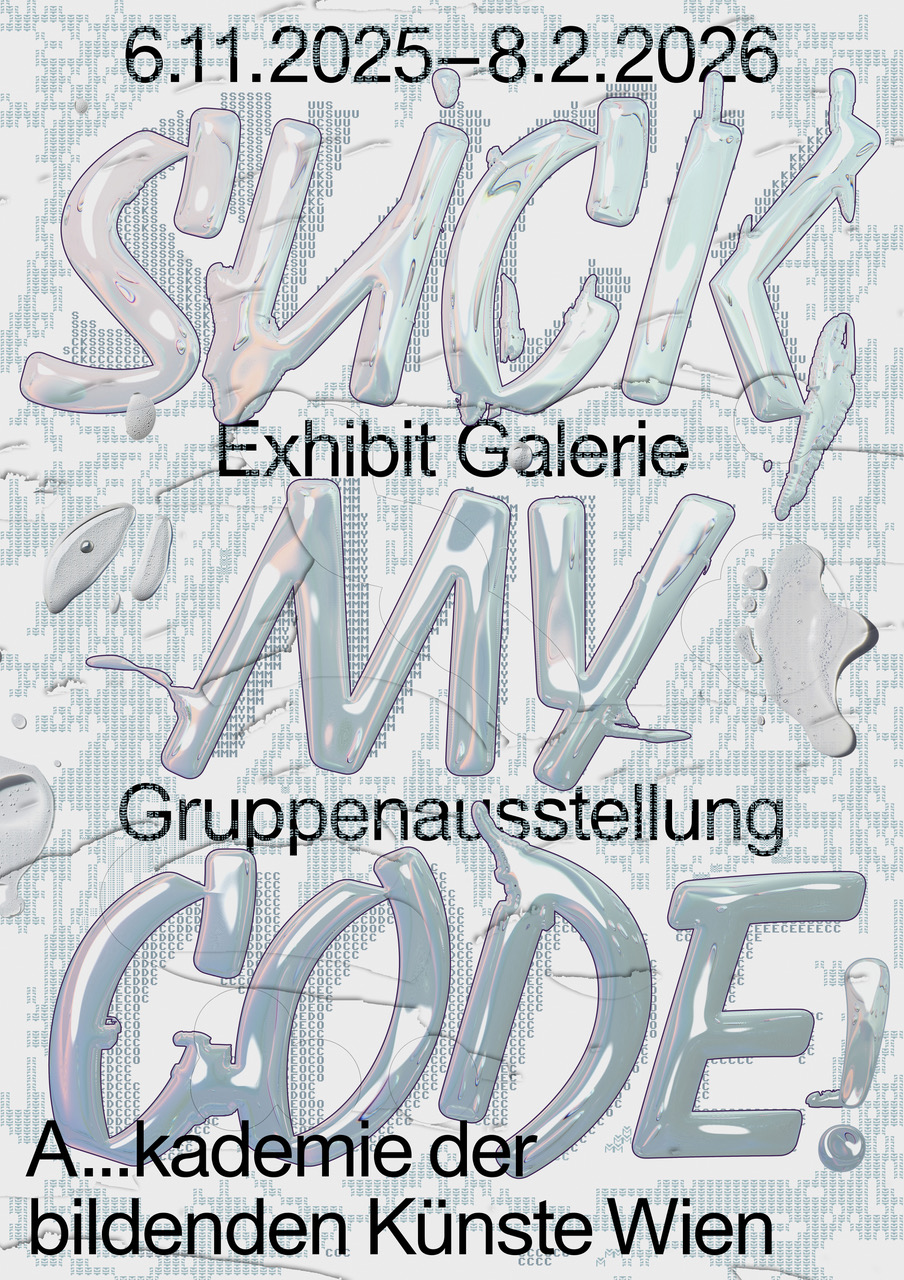
SUCK MY CODE! - Group exhibition
6/11/2025 — 8/02/2026
Exhibit Galerie – Ausstellungsraum der Akademie der bildenden Künste Wien
Schillerplatz 3, 1010 Wien, 1. Stock, Eingang über Foyer Gemäldegalerie
The group exhibition Suck my Code opens up a glitchy experiential space in which digital corporeality is negotiated in the field of tension between capitalization and sexualization.
Curated by Rosanna Marie Pondorf and Mareike Schwarz.
Opening: 5.11.2025, 18–22 h
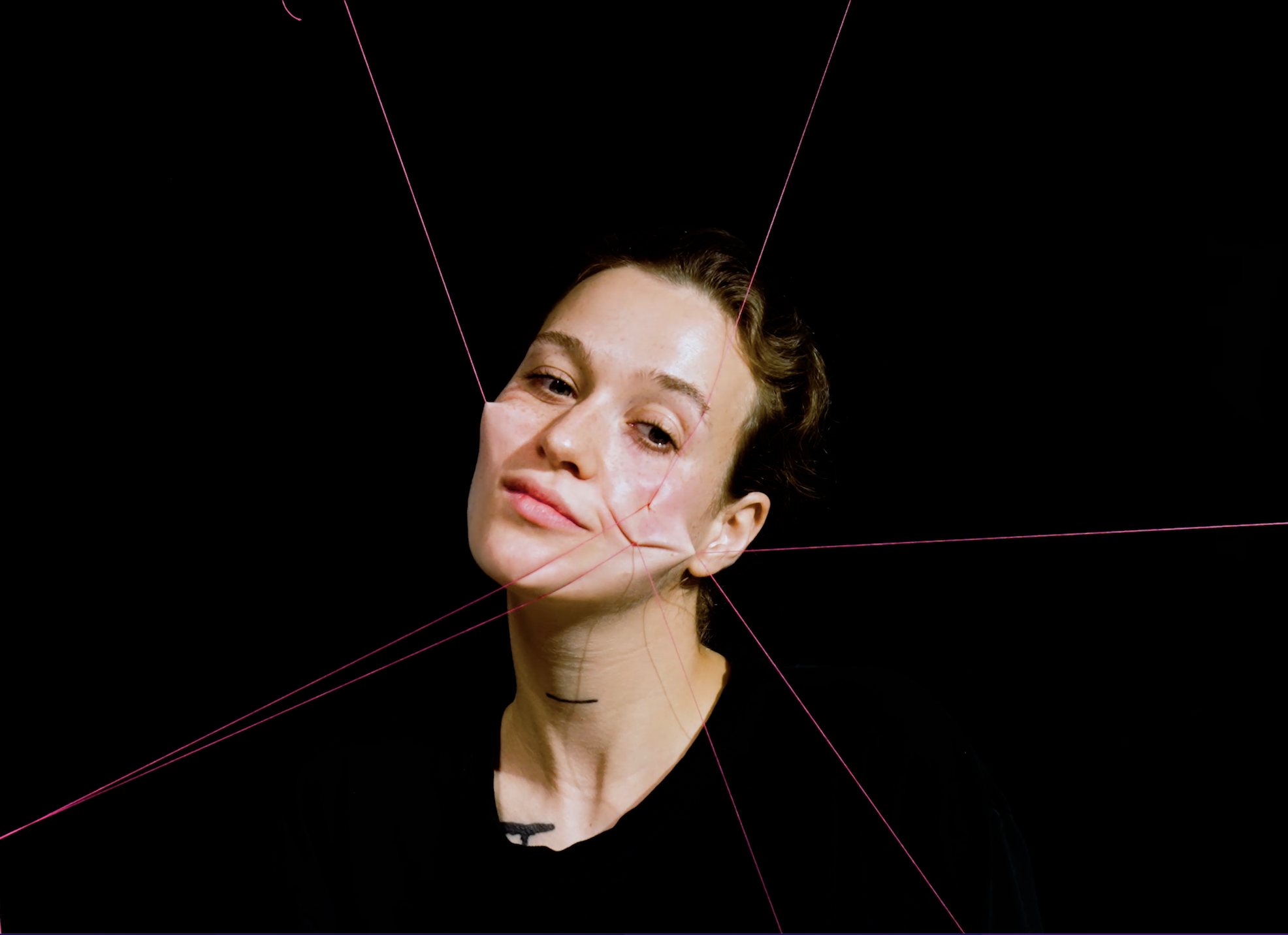
Kata Oelschlägel: Pacification
16/10/2025 — 19/12/2025
Nitsch Foundation
Hegelgasse 5, 1010 Wien
In her artistic practice, Kata Oelschlägel engages with the methods of Vienna Actionism – not with the intention of rejuvenating the movement, but to carry it forward in a progressive way.
Oelschlägel is concerned with both deconstruction and reconciliation – with an aesthetic that allows ambiguity and dissolves established connotations. Clarity is not asserted but undermined. Instead of radical gestures, her works reveal fragments, lines, and materials – traces of actions that may be read more as tender invitations than confrontations.
Central elements such as blood, the cut, and the human body are translated into sculptural processes. The action remains present, but no longer as immediate gesture – it becomes a material echo: in fabric, stone, canvas, and digital display.
The exhibition at the Nitsch Foundation explores the relationship between action and sculpture. Oelschlägel understands sculpture as an extension of action through space and time.
At the Nitsch Foundation, corporeality, ritual, and form encounter one another in a new visual language. Oelschlägel unfolds an aesthetic that seeks to move rather than to shock – beyond clarity, right within the in-between.
Opening: October 16, 2025, 6 pm
Kata Oelschlägel

Tobias Pils: Shh
Born in Linz in 1971, Tobias Pils is among the most exciting painters working today. Employing a heavily reduced color palette, he creates paintings and drawings that weave abstract and representational elements into associative pictorial worlds. What in terms of subject matter can be interpreted as an investigation of both elementary and personal themes like birth and death or becoming and passing, also negotiates central questions in painting at large. For in Pils’ visual cosmos, one painterly mark leads to the next, one image to another, as if painting were constantly staging its own death and rebirth.
Tobias Pils lives and works in Vienna.
Curated by Manuela Ammer
Tobias Pils Geist, 2024. Courtesy the artist, Galerie Eva Presenhuber, Zurich/Vienna & Galerie Gisela Capitain, Cologne Photo: Jorit Aust©Tobias Pils
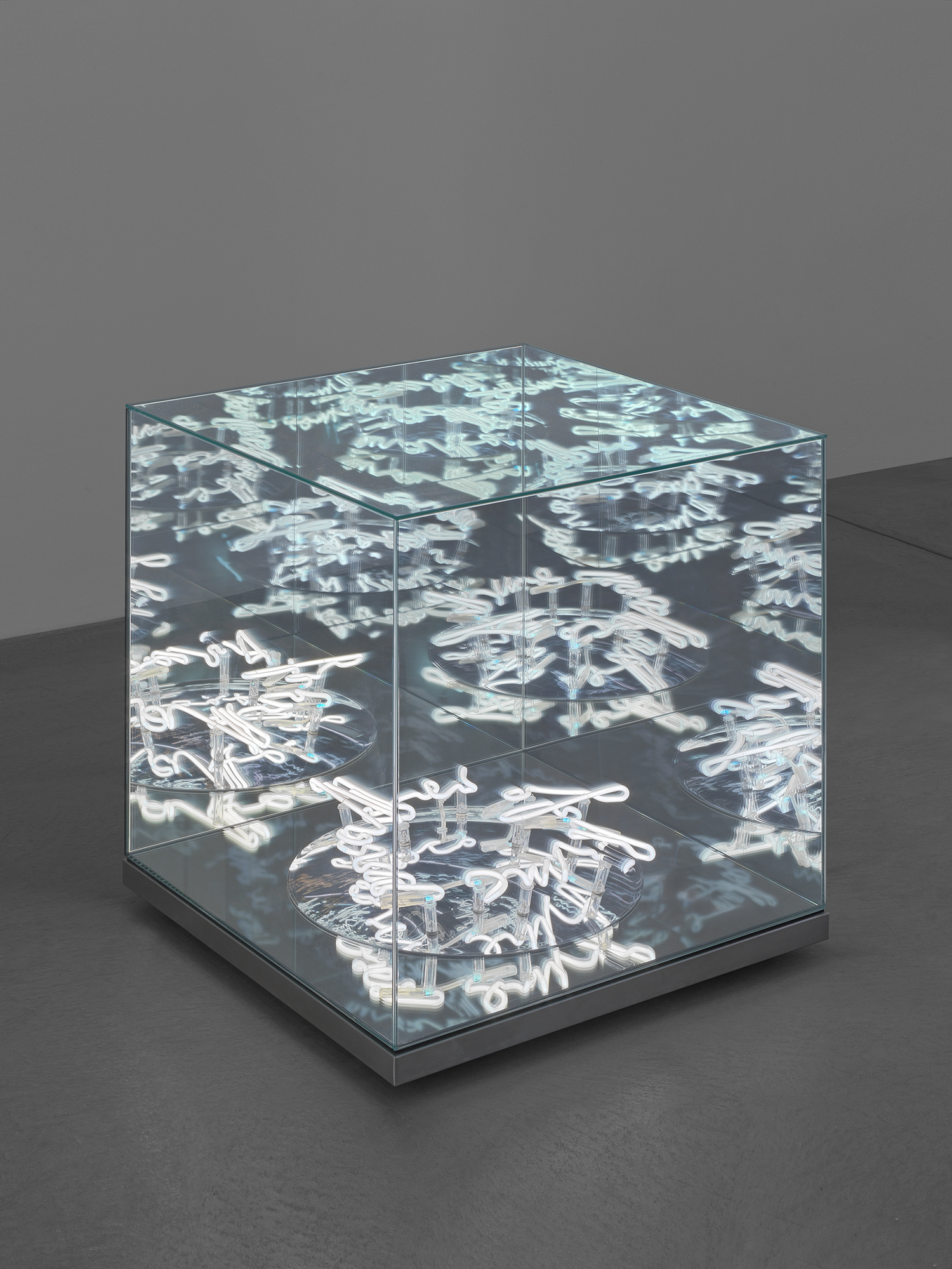
The question, »What is light?« stands at the center of Brigitte Kowanz’ oeuvre. Her answer is: »Light is what we see«—an allusion to the paradoxical fact that light makes everything visible but itself normally remains invisible. The eponymous retrospective at the ALBERTINA guides viewers through works created by this important artist since the 1980s.
Light, characterized by ephemerality, boundlessness, and immateriality, plays a leading role in this exhibition. Her light-based artworks, shown in custom-created mirrored spaces, are reflected an infinite number of times or made visible to begin with through the employment of black lights.
Also on exhibit will be the iconic works Morsealphabet and Email 02.08.1984 03.08.1984, which anticipate the present-day themes of digitization, virtualization, and the information society.
Brigitte Kowanz Matter of Time, 2019 ESTATE BRIGITTE KOWANZ © Estate Brigitte Kowanz / Bildrecht, Vienna 2025 Photo: Stefan Altenburger
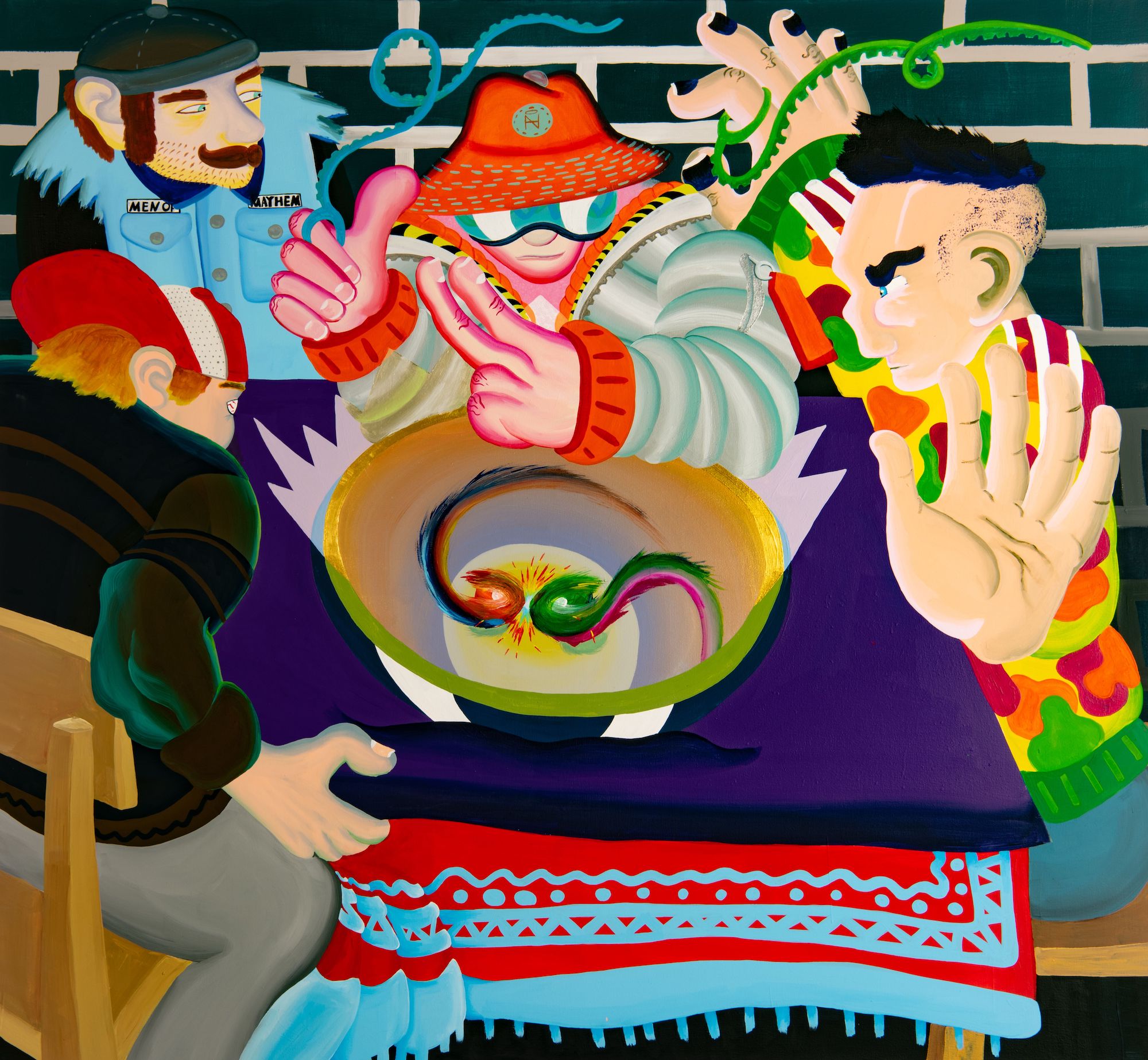
STRABAG Artaward International: Preisträger:innen Ausstellung
EXHIBITION OF THE AWARD WINNERS
BENJAMIN BURKARD
EMMA HUMMERHIELM CARLÉN
HAAKON NEUBERT
MAXIMILIAN PRÜFER
DIOR THIAM
As well as economic and ecological responsibility, cultural and social engagement are deeply integrated into the life of the company. STRABAG Kunstforum – founded in the 1990s, when the group was still headquartered in the Austrian town of Spittal/Drau – has successfully built bridges between art and business, including through its annual art prize to support young artists. First awarded in 1994, the competition was initially limited to Austria. Since 2009, when it became the STRABAG Artaward International, it has also been open to artists from selected European countries.
Between 2024 and 2026, the STRABAG Artaward International will be open to artists from Austria, Germany and Slovenia.
Young artists under the age of forty working in the fields of painting and drawing are cordially invited to apply for the prize.
DIE GANZE WELT DREHT SICH, Haakon Neubert, 2024, Acryl on canvas, Strabag Kunstforum
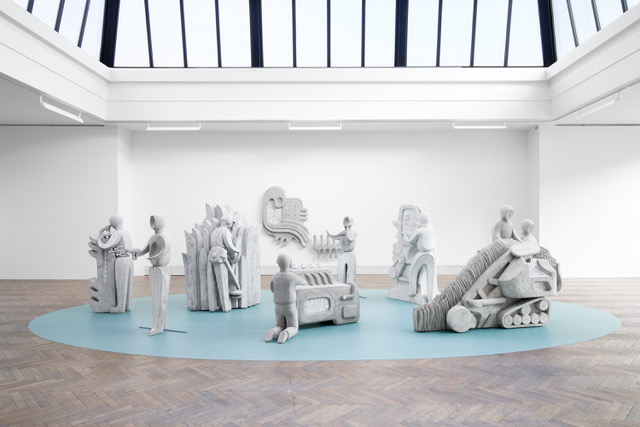
ANNA HULAČOVÁ: HUNGRY HARVEST
The Hall opens its contemporary art program with a solo presentation by Czech artist Anna Hulačová, curated by Barbara Horvath. The exhibition marks the launch of PART International Art Residency Austria, a new residency program led by Alexandra Grausam and commissioned by the Federal Ministry for Housing, Arts, Culture, Media and Sports.
In her sculptural works, Anna Hulačová creates poetically surreal counter-worlds in which humans, machines, plants, and microorganisms merge into hybrid life forms. Taking agriculture as a central force of ecological transformation, the artist critically examines the logic of industrial agricultural production.
PART is a program of the Austrian Federal Ministry for Housing, Arts, Culture, Media and Sports.
Anna Hulacova, Eating Planet, 2021, House of Arts, Brno, photo by Polina Davydenko, courtesy of the artist, House of Arts, Brno and hunt kastner, Prag
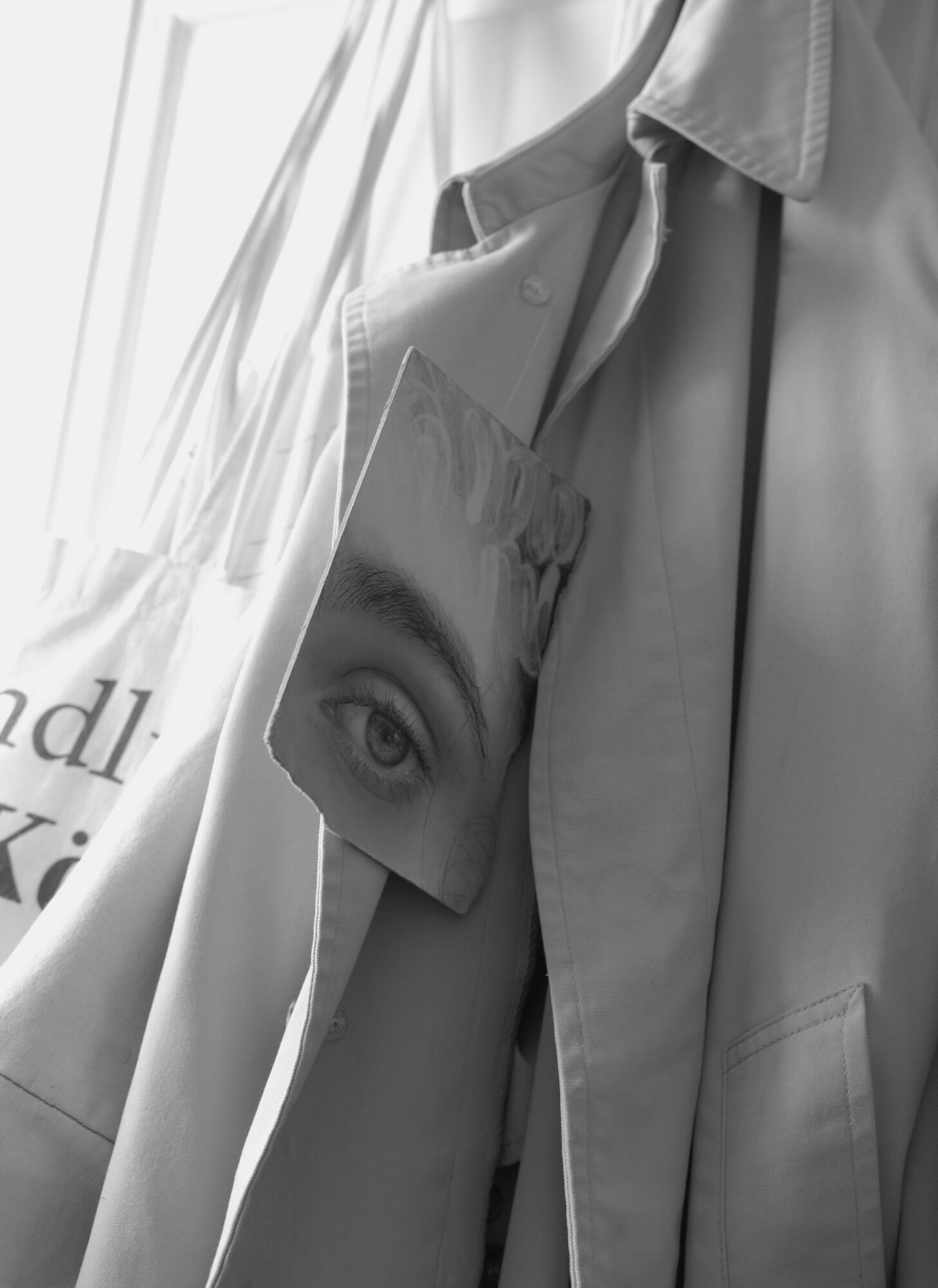
Kazuna Taguchi: I’ll never ask you
mumok is presenting the first solo museum exhibition of Japanese artist Kazuna Taguchi, who has been living in Vienna since 2013. Taguchi’s meticulously composed monochrome photographs convey body fragments, gestures, and gazes that resonate with the surrealist tradition concerning the questioning of the photographic representation of the female body. This can be moments of the phantomic or Yūgen*-like, images that capture a figure in a state between appearance and disappearance.
Taguchi’s works are based on an analog and hands-on approach at the intersection of painting and photography: In an intricate process, the artist combines various visual sources that she paints only to photograph them in various environments and setting that suit the attributes of each painting, and ultimately incorporates elements of chance while manipulating the prints in the darkroom. Taguchi compares the multiple layers and repeated interventions that lead to a permeation of myriad textures, time planes, and narrative spaces to the work of a painter who keeps tirelessly returning to her easel and brush.
*According to the Japanese poet Kamo no Chomei (1155—1216), yūgen is a feeling that is not openly expressed in words, but symbolically indicated by images.
Curated by Heike Eipeldauer
Opening: June 12, 2025, 7 pm
Kazuna Taguchi, The eyes of Eurydice #23, 2019. Gelatin Silver Print 16,6 x 12,1 cm. Courtesy of the artist
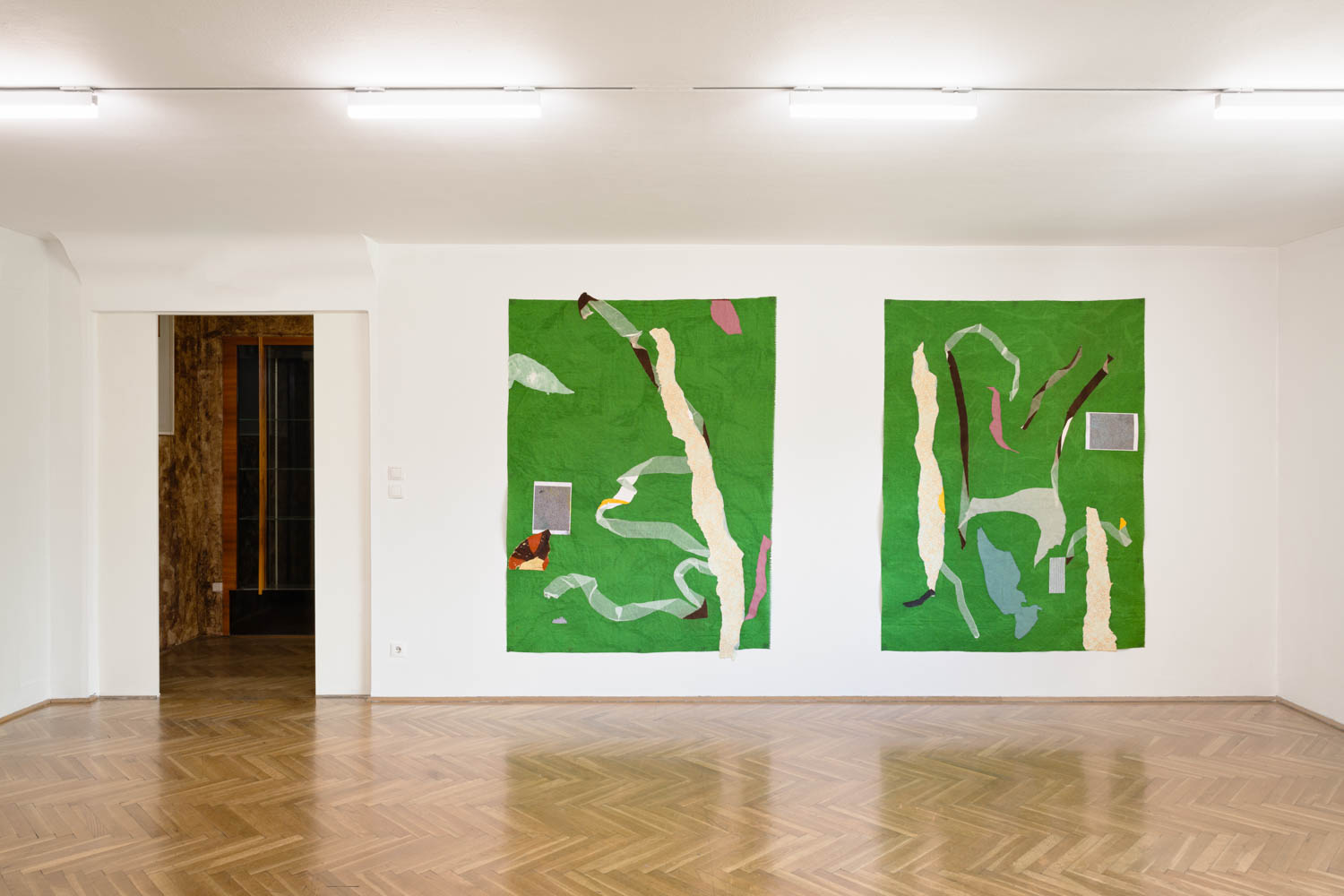
Weaving Stories
The walls of the staircase leading to Francis Offman’s exhibition Weaving Stories are covered in dried coffee grounds. This dark, tactile material turns the ascent to the exhibition space on the first floor into an immersive olfactory experience.
Coffee is central to Francis Offman’s conceptual approach to painting and symbolizes the two worlds that are intertwined in the artist’s life: Offman grew up in Rwanda and witnessed the genocide of 1994, during which extremists from the Hutu majority killed between 800,000 and 1,000,000 people—primarily Tutsi, but also moderate Hutu. In 1999, Offman emigrated to Italy, where he has lived ever since. Coffee culture is today an integral part of Italian national identity, whereas in Rwanda it only took root during German colonial rule (1897–1916). At that time, coffee was grown solely for export in regions where the destruction of local livelihoods forced people to work on colonial plantations.
Offman began working with coffee grounds when he opened the last packet his mother had brought him from Rwanda. The loss of his homeland, migration and separation, the traumatic experiences of his parents, and the longing for the Rwanda of his childhood resonate in each of his works.
Francis Offmann, Weaving Stories, Exhibition View, Secession 2025, Photo: Peter Mochi
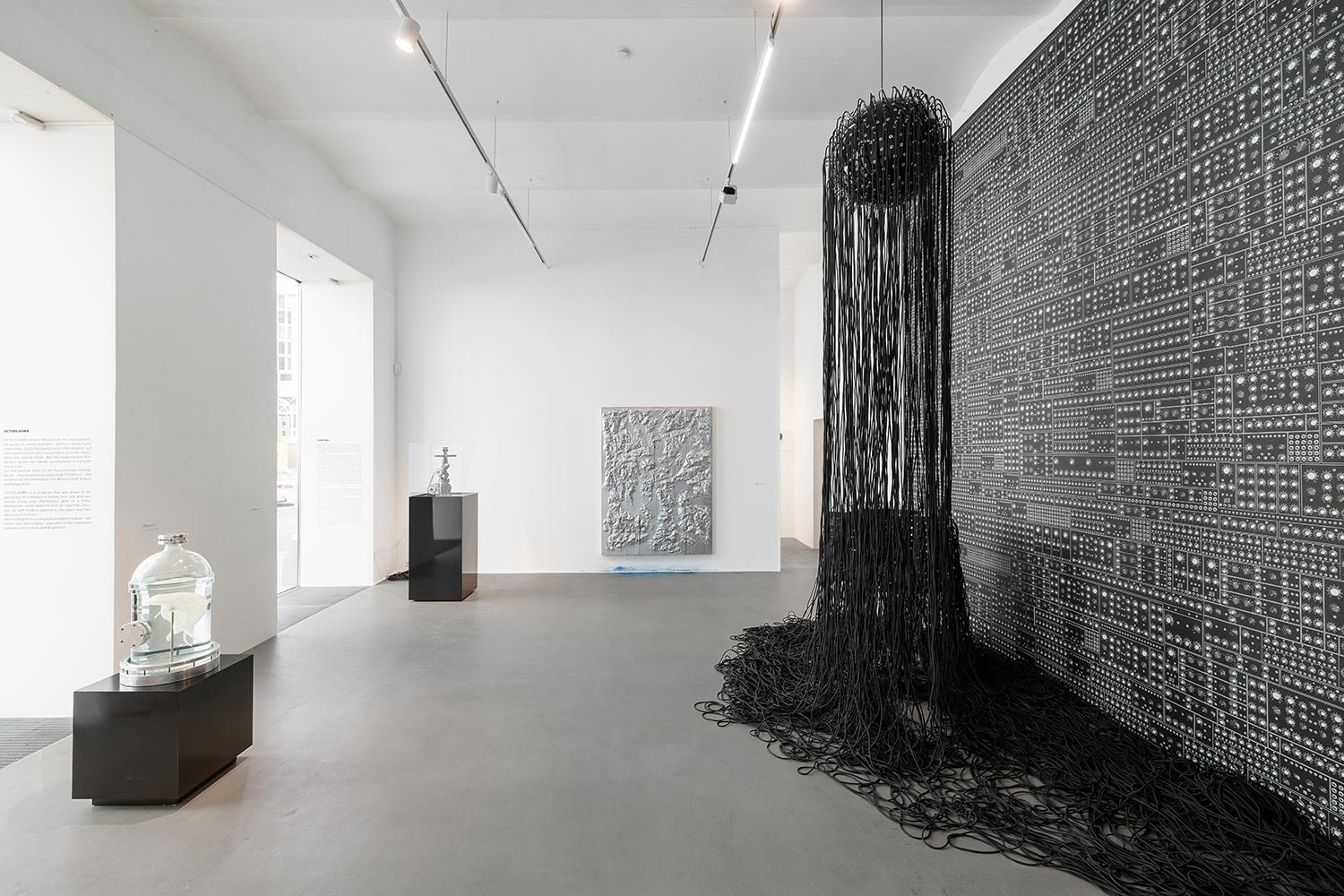
Thomas Feuerstein: ARBEIT AM FLEISCH
ARBEIT AM FLEISCH addresses the transformation of the body in the digital age but also encourages visitors to reflect on and question the ethical and philosophical implications of an increasingly networked world.
Viewers are invited to question existing notions of identity and difference, thereby also taking a look at the history of the Vienna Actionists. Feuerstein draws on their provocative and transgressive approaches with similar themes such as corporeality, identity and the crossing of boundaries between art and life.
For example, for the Biophily project in 1996, he married a rubber tree in India to create a transgenic organism. This provocative action demonstrates Feuerstein’s innovative exploration of the boundaries of the human body and nature, as well as ritual practices. 31 years after Rudolf Schwarzkogler carried out his first action Wedding (1965), in which he acted like a shaman or magician and worked on various symbolically charged objects in order to then perform a kind of “mystical” wedding with a bride.
Photo: Manuel Carreon Lopez, courtesy WAM 2025
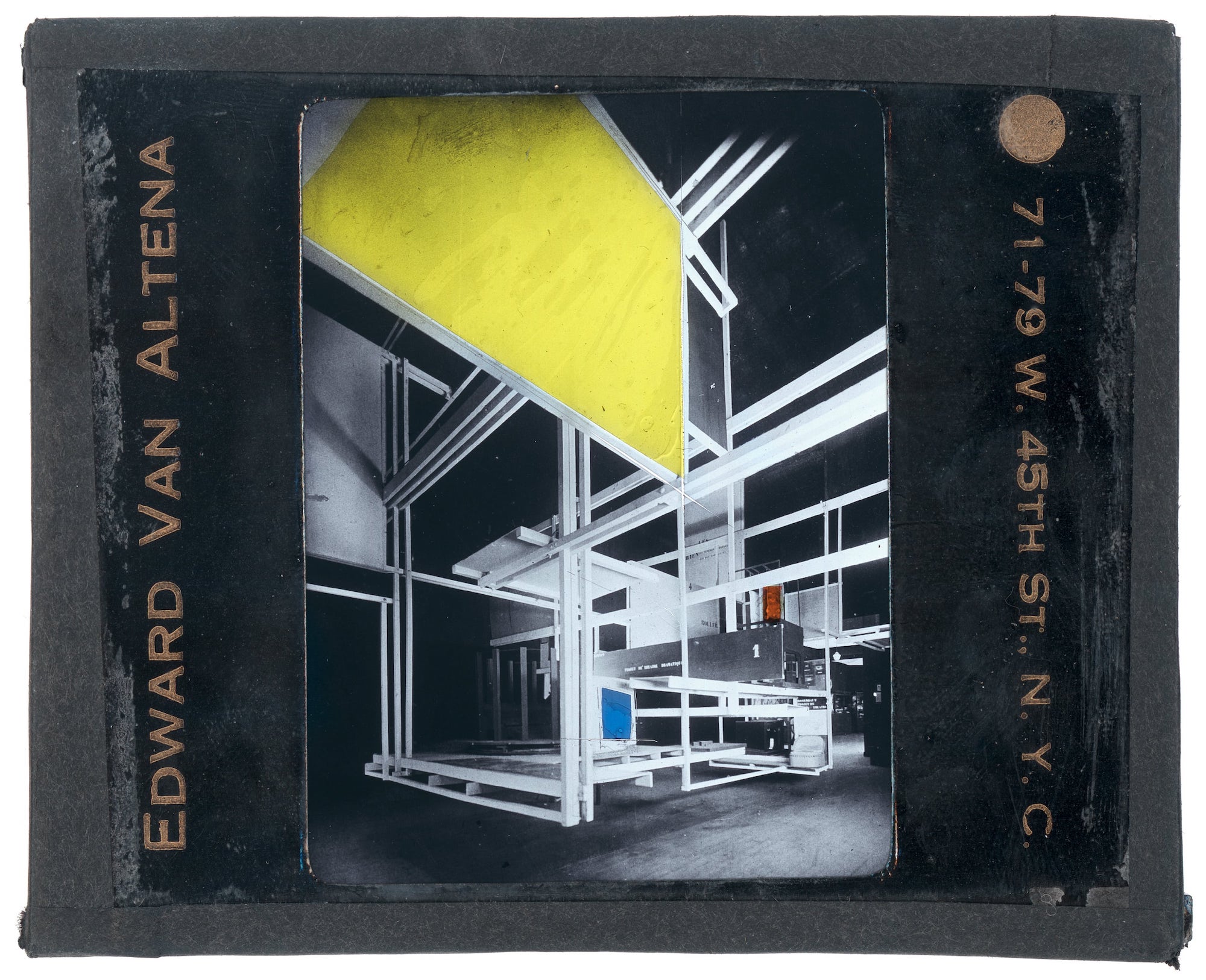
Frederick Kiesler - The Endless Search
28/05/2025 — 14/11/2025
Österreichische Friedrich und Lillian Kiesler-Privatstiftung
Mariahilfer Straße 1b/1, 1060 Wien
In the final years of his life, artist-architect Frederick Kiesler worked on a collection of diary-like notes, anecdotes, and travel reports, complemented by poems and reflections on architecture and art. Due to Kiesler’s death in December 1965, the book project remained unfinished and was posthumously published by his widow Lillian Kiesler under the title Inside the Endless House. Art, People and Architecture. A Journal. Kiesler himself had chosen the working title The Endless Search.
The exhibition picks up on these ideas and takes the visitors on an “endless search”—or rather, an endless journey through Kiesler’s architecture and art, as well as to the companions who shaped his artistic network in New York.
Selected projects are presented through exemplary objects—from his most famous works, such as the Endless House, to his stage designs for the Juilliard School of Music, the Galaxy sculptures, and portrait drawings of his friends.
The exhibition also highlights the rich diversity of the Frederick Kiesler Foundation’s archive, encompassing a wide range of media types—including glass plate slides, diaries, small models, drawings, and personal documents, many of which have rarely or never been shown before.
© Austrian Frederick and Lillian Kiesler Private Foundation, Vienna
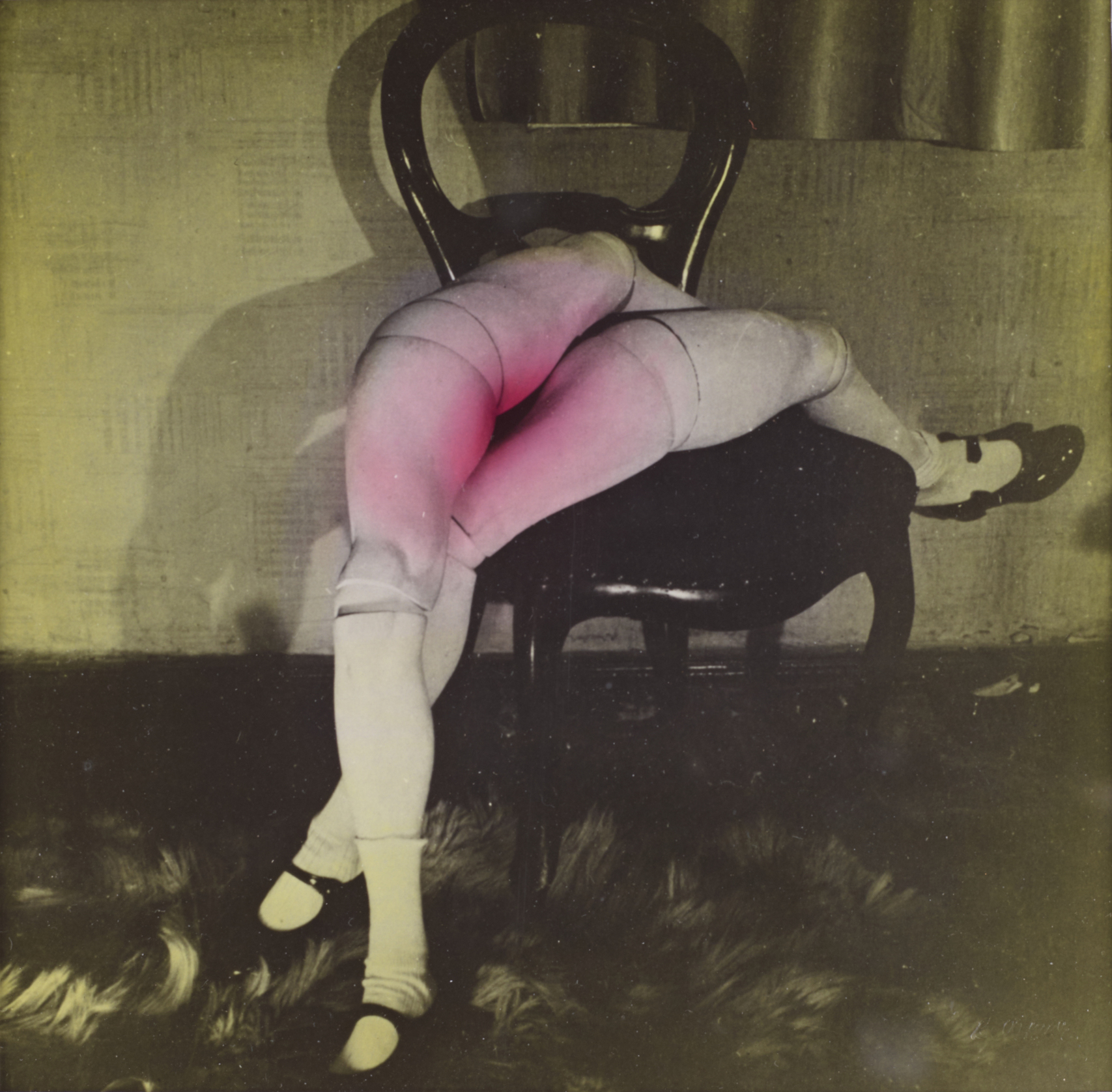
The World of Tomorrow Will Have Been Another Present
Beyond mere chronology and style histories, the exhibition The World of Tomorrow Will Have Been Another Present traces narratives in the mumok collection of classical modernism that resonate to the present day.
The departure point is a form of speculation firmly anchored in temporality—a temporality with circular tendencies. “Speculation,” says cultural scientist Karin Harrasser, “is not about the extrapolation of the present or betting on probable processes; it has to do with a retroactive allegiance, an operation in Future II: speculative thinking has to measure up with the possibilities that it will have brought into being.”*
Who, if not the artists from a collection of the twentieth and twenty-first centuries like that of the mumok, no matter when they may have been active, would understand more about this way of thinking in loops, backward and forward at the same time, about meandering through history?
The exhibition consists of five large-scale installations by Nikita Kadan, Barbara Kapusta, Frida Orupabo, Lisl Ponger, and Anita Witek, which enter into a dialogue with works of classical modernism they have selected from the mumok collection. As their own artworks are also part of the collection, these contemporaries continue to write the history of the museum and the history of contemporary art. In the exhibition, urgent questions of our time are mirrored in historical manifestations of themselves, which, in turn, point from an already past present to a still indefinite future.
With works by Herbert Bayer, Hans Bellmer, Karl Blossfeldt, Louise Bourgeois, Constantin Brâncuși, Friedl Dicker-Brandeis, Henri Florence, Alberto Giacometti, Juan Gris, George Grosz, Raul Hausmann, Johannes Itten, Friedrich Kiesler, Ernst Ludwig Kirchner, Fernand Léger, René Magritte, Alicia Penalba, Antoine Pevsner, Man Ray, Germaine Richier, Alexander Michailowitsch Rodtschenko, Oskar Schlemmer, Kurt Schwitters, Victor Servranckx, Nicola Vučo, Fritz Wotruba and many more
Curated by Franz Thalmair in collaboration with Nikita Kadan, Barbara Kapusta, Frida Orupabo, Lisl Ponger, and Anita Witek
* Karin Harrasser, “As reality creates itself, unforeseeable and new, its image reflects behind it into the indefinite past.” in: Kunstraum Lakeside — Recherche | Research, ed. Franz Thalmair, trans. Peter Blakeney and Christine Schöffler (Vienna: Verlag für moderne Kunst, 2019), p. 17.
Opening: May 22, 2025, 7 pm
Hans Bellmer La Bouche / The Mouth, 1935. mumok - Museum moderner Kunst Stiftung Ludwig Wien, acquired in 1978 © Bildrecht, Wien 2025
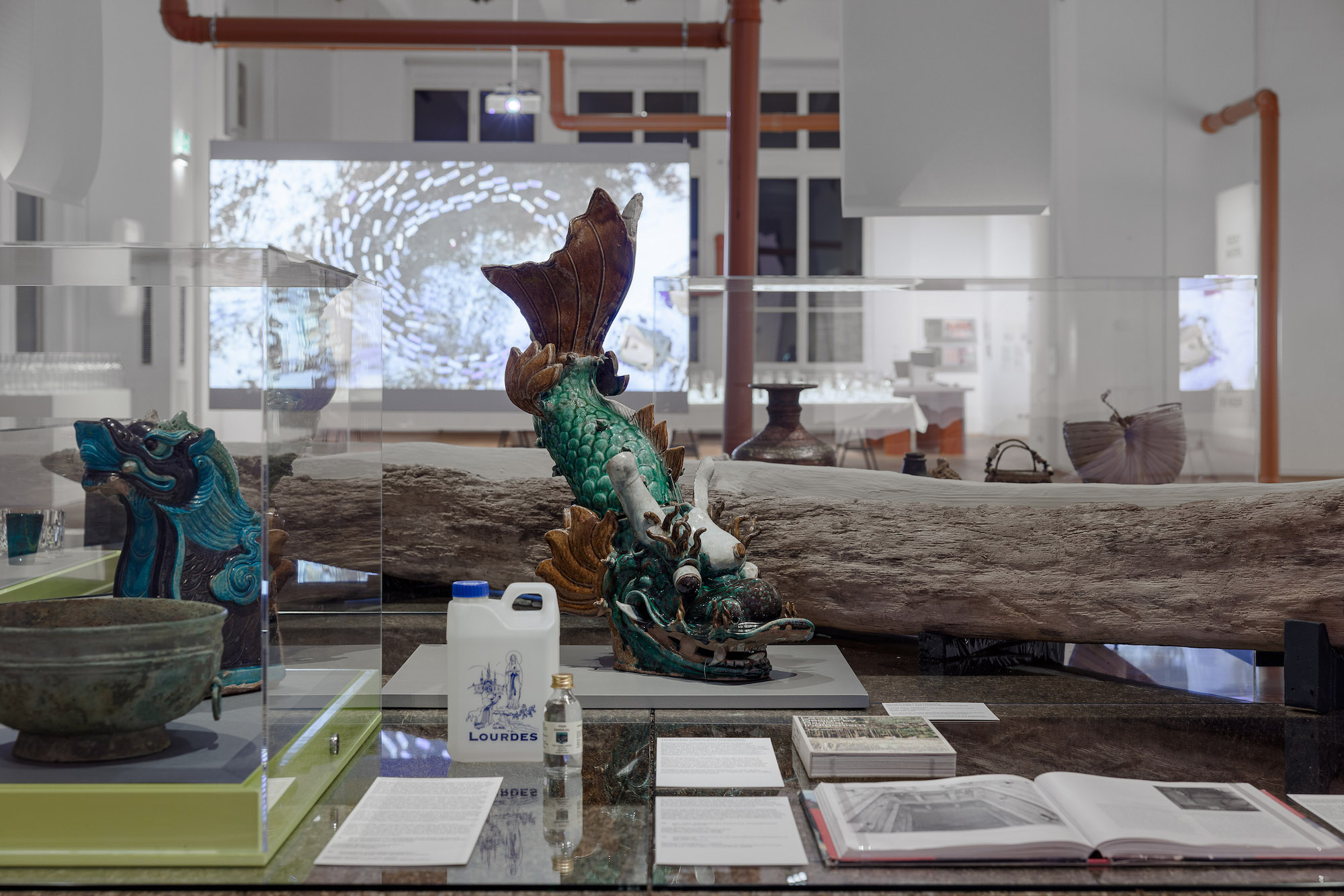
WATER PRESSURE: Designing for the Future
Water scarcity, droughts, pollution of rivers, lakes, oceans, and groundwater, flooding, disrupted water cycles, and the loss of biodiversity: The global water crisis has many faces, some with dramatic consequences. Although access to water is a human right, according to the United Nations about two billion people worldwide have no access to clean drinking water, and 3.5 billion live without basic sanitation. The careful management of this essential resource is one of humanity’s greatest challenges. As one of the first large-scale museum explorations of this urgent topic, WATER PRESSURE. Designing for the Future showcases the versatile element of water and the role of design in shaping a sustainable water future.
The multidisciplinary project—a cooperation between the MAK, the Museum für Kunst und Gewerbe Hamburg (MK&G), and Jane Withers Studio, London—brings together art, design, architecture, and science with the shared goal of contributing visionary concepts for the conservation, sustainable use, and equitable distribution of water. A broad range of innovative objects and installations show ways to resolve the global water crisis and to radically change the current situation, with many of the solutions relying on principles from nature.
MAK Exhibition View, 2025 WATER PRESSURE. Designing for the Future © kunst-dokumentation.com/MAK

Oskar Kokoschka: School of Vision
10/05/2025 — 26/10/2025
Universität für angewandte Kunst Wien
Oskar-Kokoschka-Platz 2, 1010 Wien
In 2025, the Kokoschka Museum Pöchlarn is dedicating itself to Oskar Kokoschka’s decades of work as a teacher and his intensive involvement with educational issues. The exhibition spans a wide range from his first teaching experiences shortly after finishing his studies at the Vienna School of Applied Arts to his great, international successes as a teacher in the first post-war decades.
Kokoschka’s early work as a drawing teacher at Eugenie Schwarzwald’s private school in 1911 ended in a scandal – the school authorities had him dismissed. His teaching style seemed too unorthodox and not academic enough. The international success of his “School of Seeing”, founded in Salzburg in 1953, stands in stark contrast to this. Kokoschka’s teaching focused on the figurative depiction of moving models. The way he worked in his painting class and the tremendous impact of his personality became a formative experience for numerous students.
Oskar Kokoschka mit Schüler:innen der „Schule des Sehens“, Salzburg 1953–1955, Foto: F. Solms, Oskar Kokoschka Dokumentation P
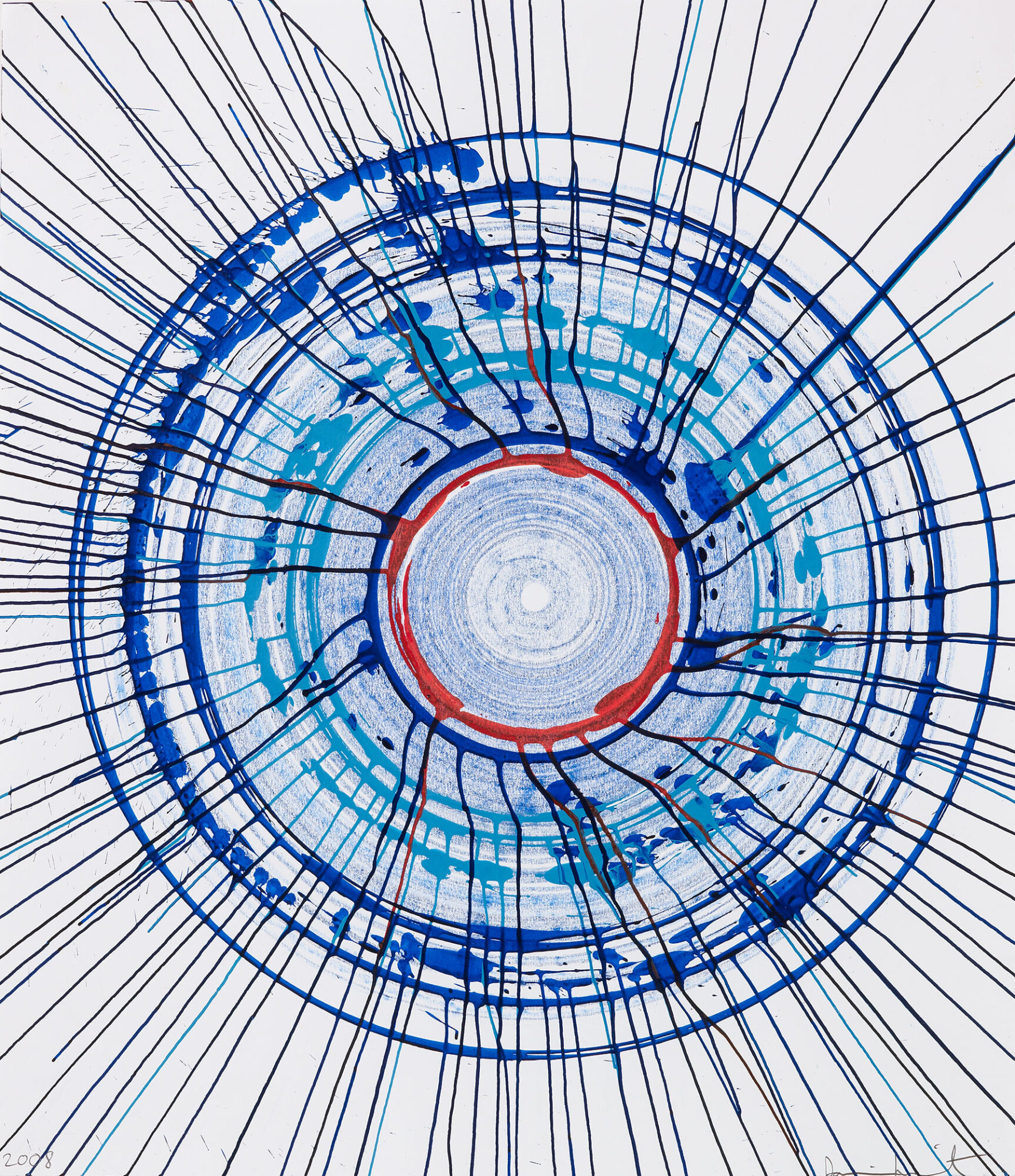
Damien Hirst: Drawings
7/05/2025 — 12/10/2025
Albertina modern
Karlsplatz 5, 1010 Wien
The first-ever museum exhibition of internationally acclaimed artist Damien Hirst’s drawings will be presented at Albertina Modern from 7 May until 12 October 2025.
Damien Hirst is one of the most important artists working today, having achieved international recognition for his paintings, sculptures, and installations. However, the British artist’s drawings are less well known, which the Albertina Modern will now present for the first time in a museum setting.
This exhibition offers a fascinating insight into Hirst’s creative processes, starting with drawings and sketches produced from the 1980s onward. These images, many of which were produced in preparation for his pioneering works, will be shown together with a selection of related sculptures and paintings.
Damien Hirst Beautiful Temporarily Lost At Sea Drawing, 2008 Photo Prudence Cuming Associates Ltd © Damien Hirst and Science Ltd. Bildrecht, Wien 2025
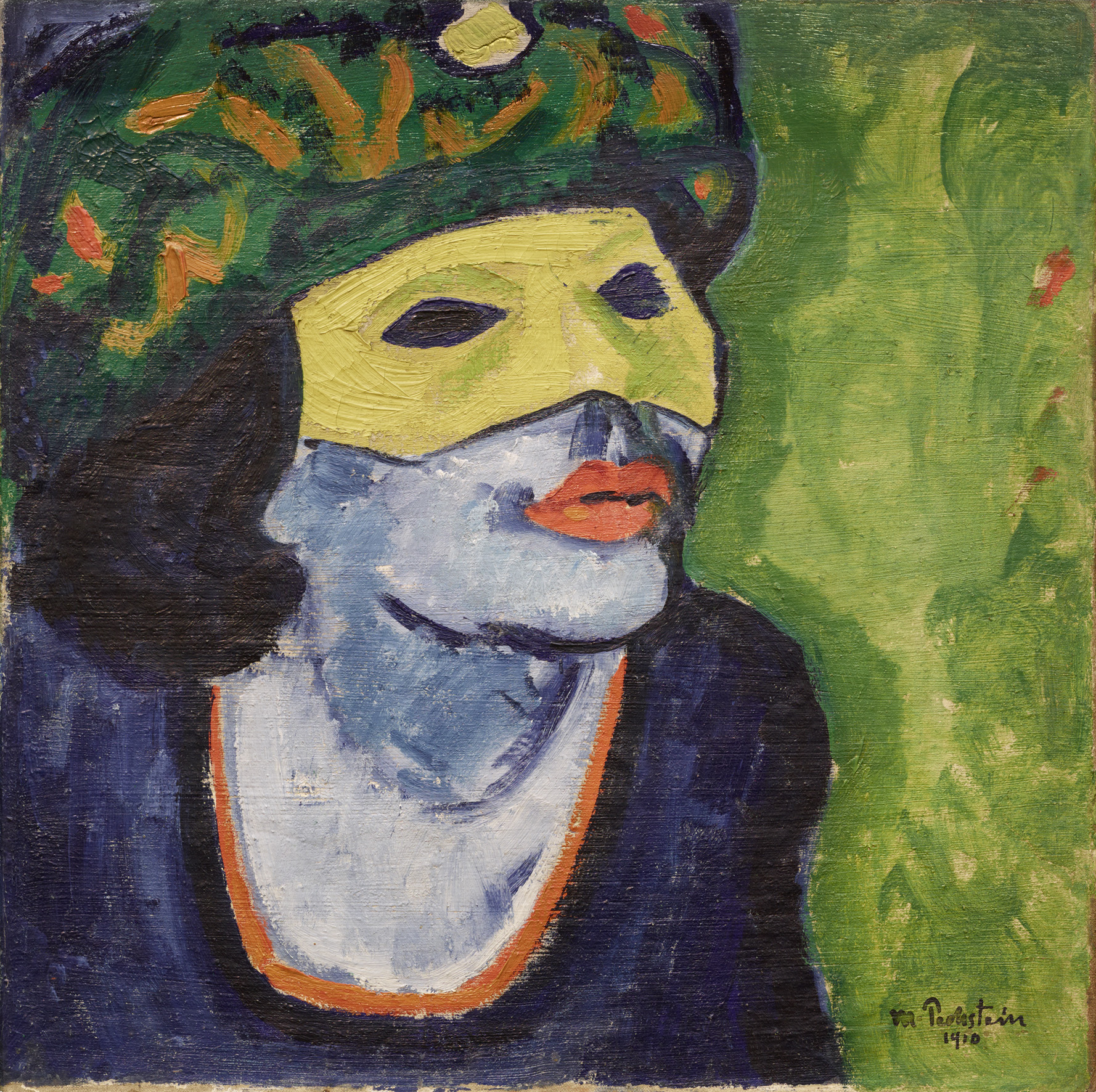
Experiment Expressionismus: Schiele meets Nosferatu
Expressionism was a revolution in art. With bold colors, exaggerated gestures, and radical compositions, artists of the early 20th century sought new ways to express emotional and psychological states. The exhibition Experiment Expressionism. Schiele meets Nosferatu at the Heidi Horten Collection brings together, for the first time, visual art and silent film from the 1920s in direct dialogue. Presenting around 170 works 3 including paintings, watercolors, photographs, film posters, stills, and excerpts from classics such as The Cabinet of Dr. Caligari (1920) and Nosferatu 3 A Symphony of Horror (1922) 3 the exhibition illustrates the remarkable diversity of this expressive movement.
Curated by Agnes Husslein-Arco, Rolf H. Johannsen and Roland Fischer-Briand (Film), the exhibition takes as its starting point major works from German and Austrian Expressionism, featuring artists such as Herbert Boeckl, Bettina Ehrlich- Bauer, Helene Funke, Richard Gerstl, Erika Giovanna Klien, Carry Hauser, Ernst Ludwig Kirchner, Oskar Kokoschka, Broncia Koller-Pinell, Emil Nolde, Max Pechstein, Egon Schiele, Karl Schmidt-Rottluff, Alfons Walde, Marianne von Werefkin, and Alfred Wickenburg.
Max Pechstein, Gelbe Maske II, 1910, Heidi Horton Collection
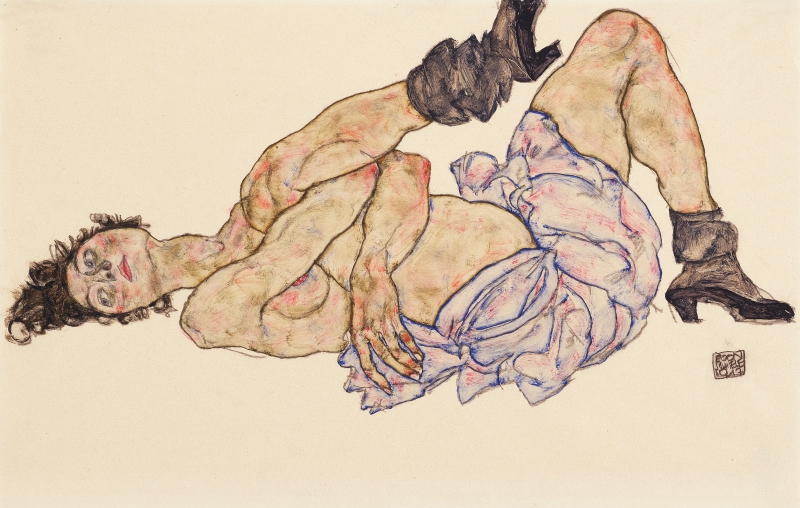
Egon Schiele: Last Years
28/03/2025 — 13/07/2025
Leopold Museum
Museumsplatz 1, 1070 Wien
The exhibition “Times of upheaval. Egon Schiele’s final years: 1914-1918” interweaves biographical and artistic elements and deals with the ruptures and changes in Schiele’s ‘late work’ from 1914 to 1918, to which less attention has been paid to date. Schiele gradually abandoned the radical formal experiments of the years 1910 to 1914 and developed a more realistic style, which was characterized by deeper empathy. His strokes calmed down, became more flowing and organic, and the sitters gained in physical fullness. The exhibition also provides new insights into this decisive period through the interweaving of contemporary archive material, such as Edith Schiele’s previously unpublished diary.
Egon Schiele, Liegender weiblicher Akt, 1917 © Moravská galerie v Brně / Moravian Gallery in Brno, Foto: Moravian Gallery in Brno
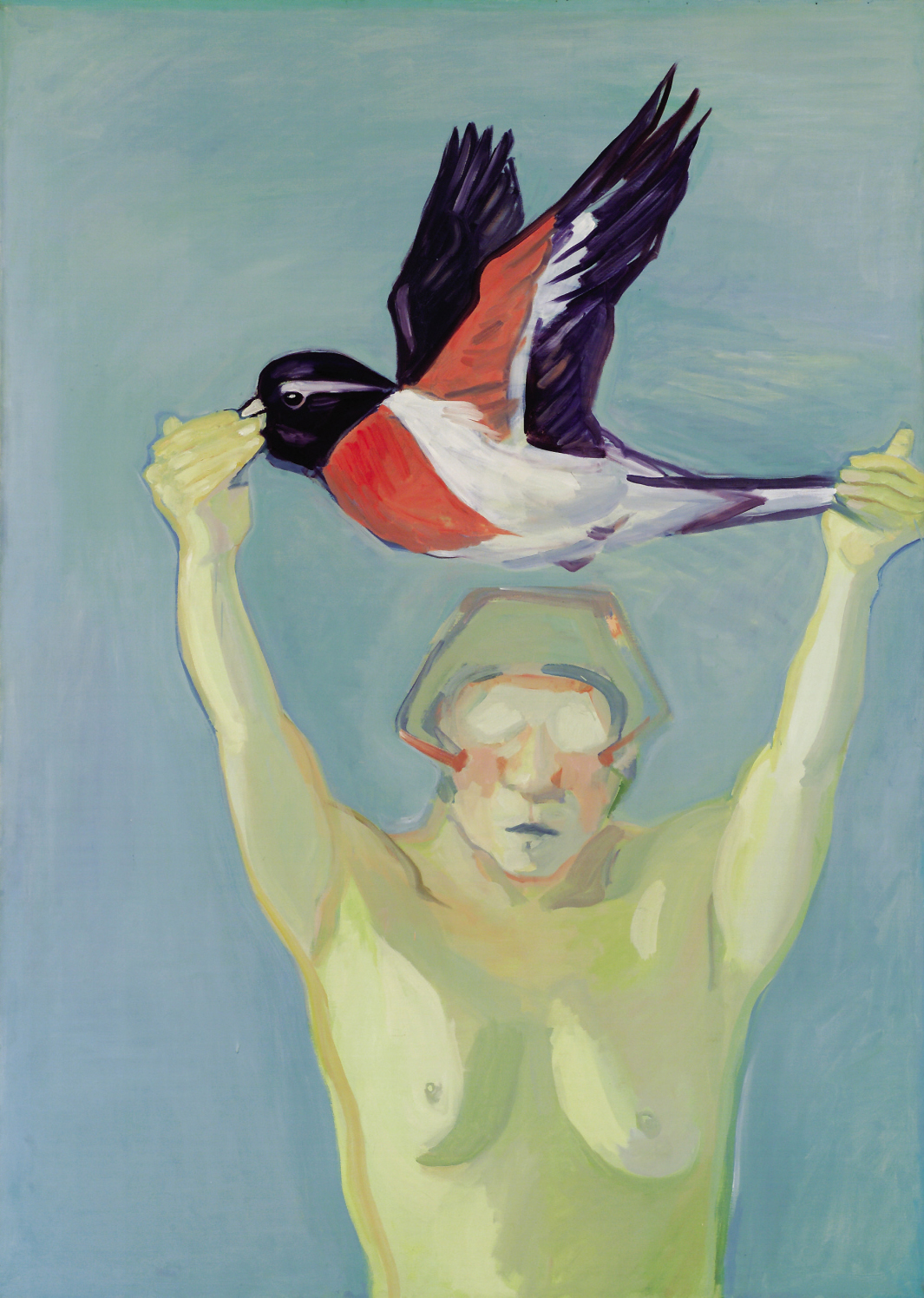
Never Final! The Evolving Museum
This exhibition focuses on the transformative years of mumok under the directorship of Dieter Ronte (1979–1989). Exemplary insights into the heterogeneity of the collection expansions are juxtaposed with the culturalpolitical parameters and programmatic decisions of this decade.
“Never Final”—a concept articulated by Hertha Firnberg—continues to define mumok as a dynamic place of change to this day. This idea is brought to life in the exhibition through an open format featuring interactive furniture and dialogue spaces, presenting the museum as a platform for collective research, learning, and reflection.
Curated by Marie-Therese Hochwartner and Dieter Ronte
Maria Lassnig. Learning to fly, 1976. mumok - Museum moderner Kunst Stiftung Ludwig Wien, acquired in 1980 © Maria Lassnig

herman de vries: all this
19/03/2025 — 10/08/2025
MuseumsQuartier Wien
Museumsplatz 1, 1070 Wien
herman de vries
The exhibition by Dutch artist herman de vries presents a work that turns nature itself into a work of art. de vries’ artistic engagement with nature thrives on immediacy and presence – nature is allowed to speak for itself. In a world that is becoming increasingly alienated from natural processes, he challenges us to sharpen our gaze, to make the hidden visible and to discover the extraordinary in the ordinary. “all this” is the artist’s first institutional solo exhibition in Austria. His works can be seen in numerous international art institutions. In 2015, herman de vries represented the Netherlands at the Venice Biennale.
© herman de vries | the poet in his poetry: im löchla, 1987 | Bildrecht, Wien 2025

Huda Takriti: Anatomy of an Endless Scene
19/03/2025 — 10/08/2025
MuseumsQuartier Wien
Museumsplatz 1, 1070 Wien
In her interdisciplinary practice, the Syrian artist Huda Takriti deals with questions of questions of memory, identity, migration and the intertwining of personal and collective personal and collective history. In her exhibition at the MuseumsQuartier Wien, she is showing two video works in which she explores the dynamics of power, time and historiography – using the example of the Algerian revolution, among others.
Clarity is the Closest Wound to the Sun, One Channel Video (Still), 2023 © Huda Takriti | Bildrecht, Wien 2025

Park McArthur: Contact M
The exhibition Park McArthur. Contact M brings together, for the first time, artworks made between the 2010s and 2020s. These artworks and the forms they take are guided by personal and social meanings of disability, delay, and dependency.
Co-organized by mumok in Vienna and Museum Abteiberg, Mönchengladbach, the exhibition is a collaboration between both institutions and will be presented simultaneously at both locations. Questions of simultaneous experience and access to art and culture shape this project’s format and purpose.
Curated by Matthias Michalka, mumok – Museum moderner Kunst Stiftung Ludwig Wien and Susanne Titz and Alke Heykes, Museum Abteiberg, Möchengladbach
Park McArthur,Contact M, mumok: Vienna, 2025 Installation view of Ramps, 2014, Missions, 2025.Courtesy of the artist.Photo: Simon Vogel
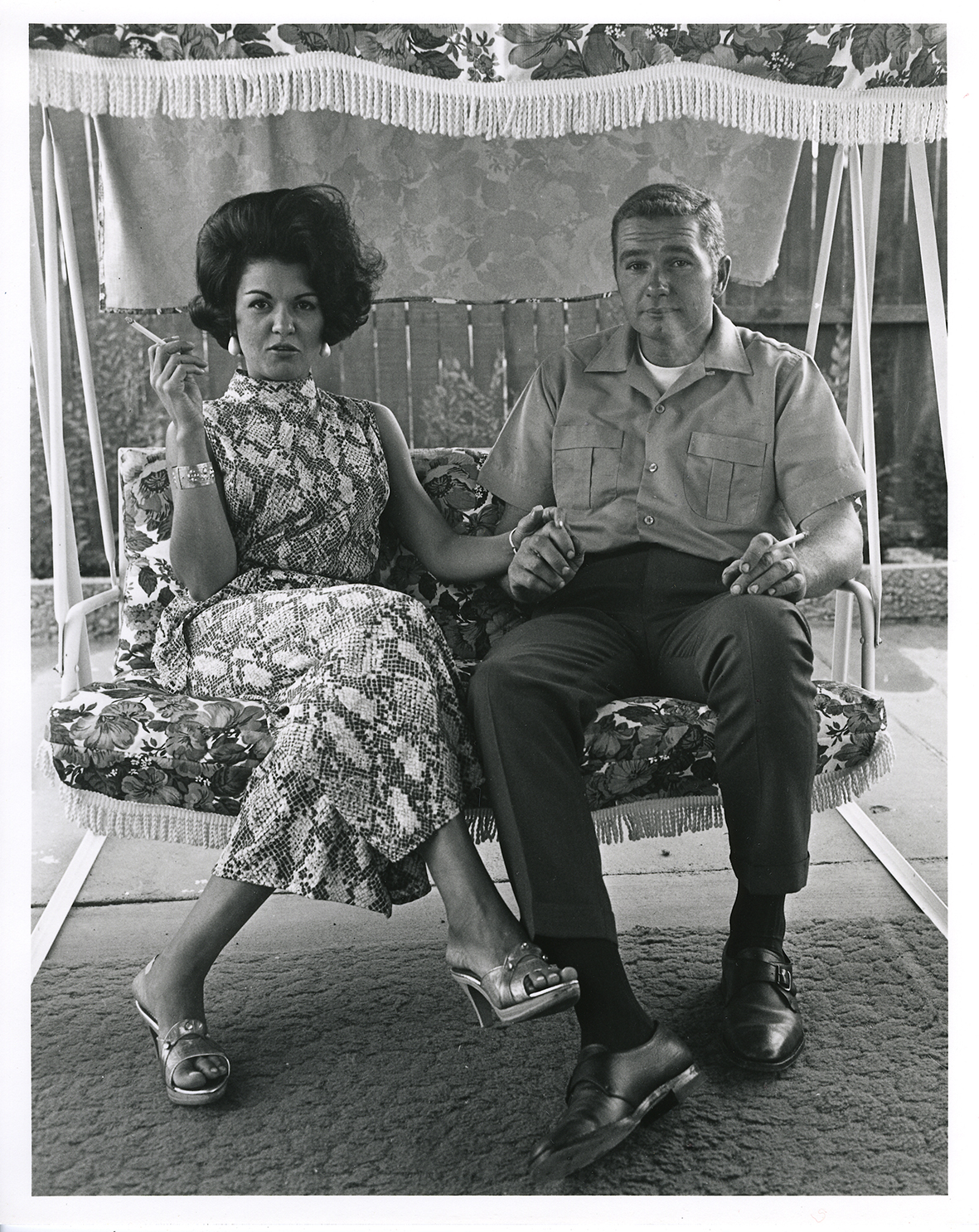
Suburbia: Living the American Dream
6/03/2025 — 4/08/2025
Architekturzentrum Wien
Museumsplatz 1 im MuseumsQuartier (Eingang Volkstheater), 1070 Wien
Suburbia traces the history of an ideal of life that – starting in the US suburbs – conquered the world and is incessantly reproduced by popular media. At the same time, the exhibition analyzes the contradictions of this model and its social and ecological consequences such as land consumption, soil sealing, and vacancy. The big question is: What happens next?
The American dream can be described with an image that seems to have stood still in time: a large house with a yard, swimming pool, and two cars in the garage. A quiet, safe place for the nuclear family, close to nature and in people-friendly surroundings. Suburbia carries us off into this world of ideas and images that has been hugely promoted by politics, business, and the entertainment industry. The cultural history of the single-family home has its origins in the upscale American residential areas of the early nineteenth century. After the Second World War, the typology was massively developed and rolled out on a broad scale. The exhibition sheds light on the economic, political, and social context of this rapid expansion in the USA and beyond. It becomes clear that the model is based on social, ethnic, and gender-specific segregation and takes up an enormous amount of space.
The exhibition, curated by Philipp Engel for the Centre de Cultura Contemporània de Barcelona (CCCB), was adapted for the Az W and expanded to include an Austrian focus. Even in Austria, a large share of the population still wants to realize their own version of this dream on the outskirts of the city. According to a recent study by the University of Natural Resources and Life Sciences, Vienna (BOKU), the proportion of highly sprawling areas in Austria increased fivefold between 1975 and 2020 – particularly due to detached single-family homes, large-scale industrial parks, and shopping centers. As a result, traffic areas are destroying the landscape, the rapidly advancing sealing is threatening biodiversity and food security, town centers are becoming deserted, and in an aging society people are sliding into isolation. The image of half-abandoned, aging houses and residential estates characterizes many parts of the country. Instead of building new ones, the question arises as to how the existing stock of these approximately 1.5 million single-family homes can be made usable for the future. Successful examples of conversions, repurposing, densification, or new forms of living and working are intended to demonstrate the enormous potential and attractive alternatives.
Bill Owens: Cleo and James Pruden, 1972, Photo: Bill Owens Archive, Milano
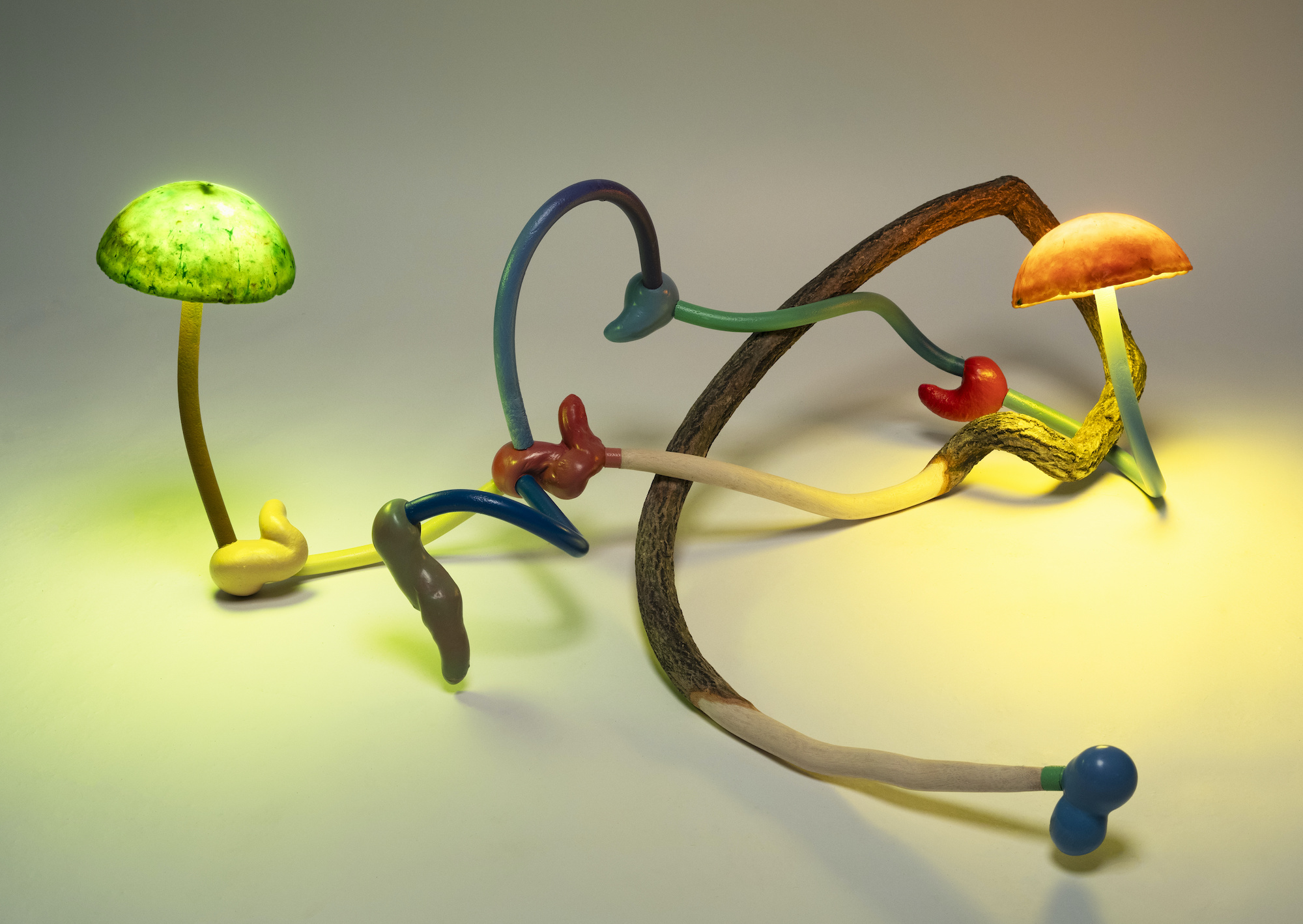
Mika Rottenberg: Antimatter Factory
27/02/2025 — 10/08/2025
KunstHausWien
Untere Weißgerber Straße 13, 1030 Wien
Mika Rottenberg (*1976) is a New York-based artist who combines film, architectonic installations and interactive kinetic objects in her practice to illustrate the absurdity of the seemingly limitless escalating production of goods and commodities in our contemporary hypercapitalist world. From pearl farming and food production through to the mass manufacturing of plastic articles in China, Rottenberg humorously points to the urgent need to spare resources, to consume less and live in a more sustainable manner.
The exhibition is a cooperation with the Museum Tinguely in Basel and the Lehmbruck Museum in Duisburg.
© Mika Rottenberg, Lampshare, 2024 © Mika Rottenberg, Courtesy the artist and Hauser & Wirth Photo: Pete Mauney
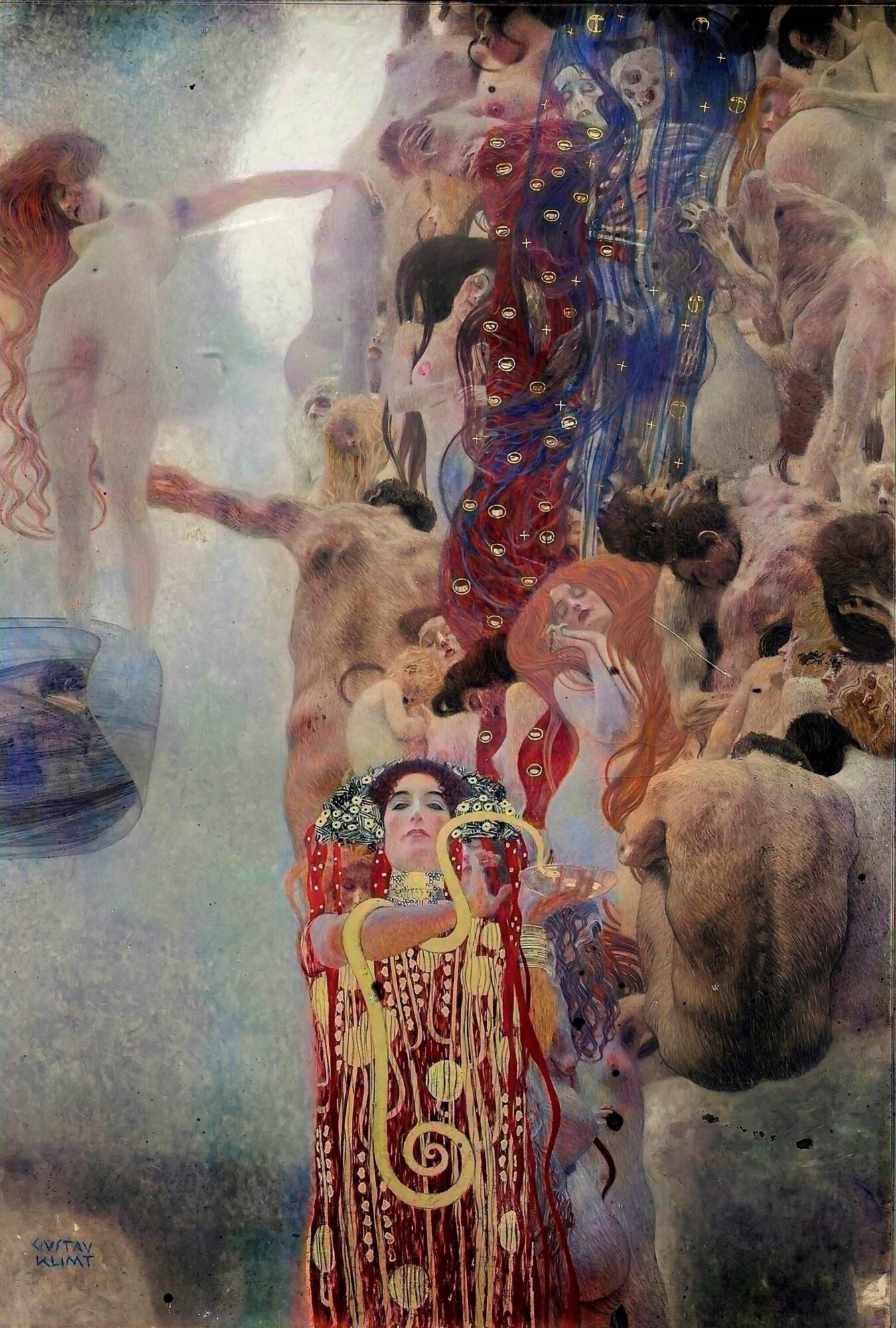
Gustav Klimt: Pigment & Pixel
20/02/2025 — 7/09/2025
Unteres Belvedere
Rennweg 6, 1030 Wien
Recent technological studies provide new insights into Gustav Klimt’s working methods and artistic practice. Looking beneath the surface of the paint layers reveals the creation process of his paintings, occasionally uncovering surprising deviations between the preliminary drawing and the final execution of the artworks.
The exhibition also explores the question of how Klimt created his legendary golden paintings. How did he apply gold to the canvas? Macro photographs confirm that Klimt used only precious gold leaf for his works. Among the highlights is his iconic painting Judith—one of the first pieces in which the artist experimented with gold.
Gustav Klimt, Faculty Painting "Medicine", 1901, Recolorization based on historical photograph (2021)Belvedere, Vienna / Image by Google
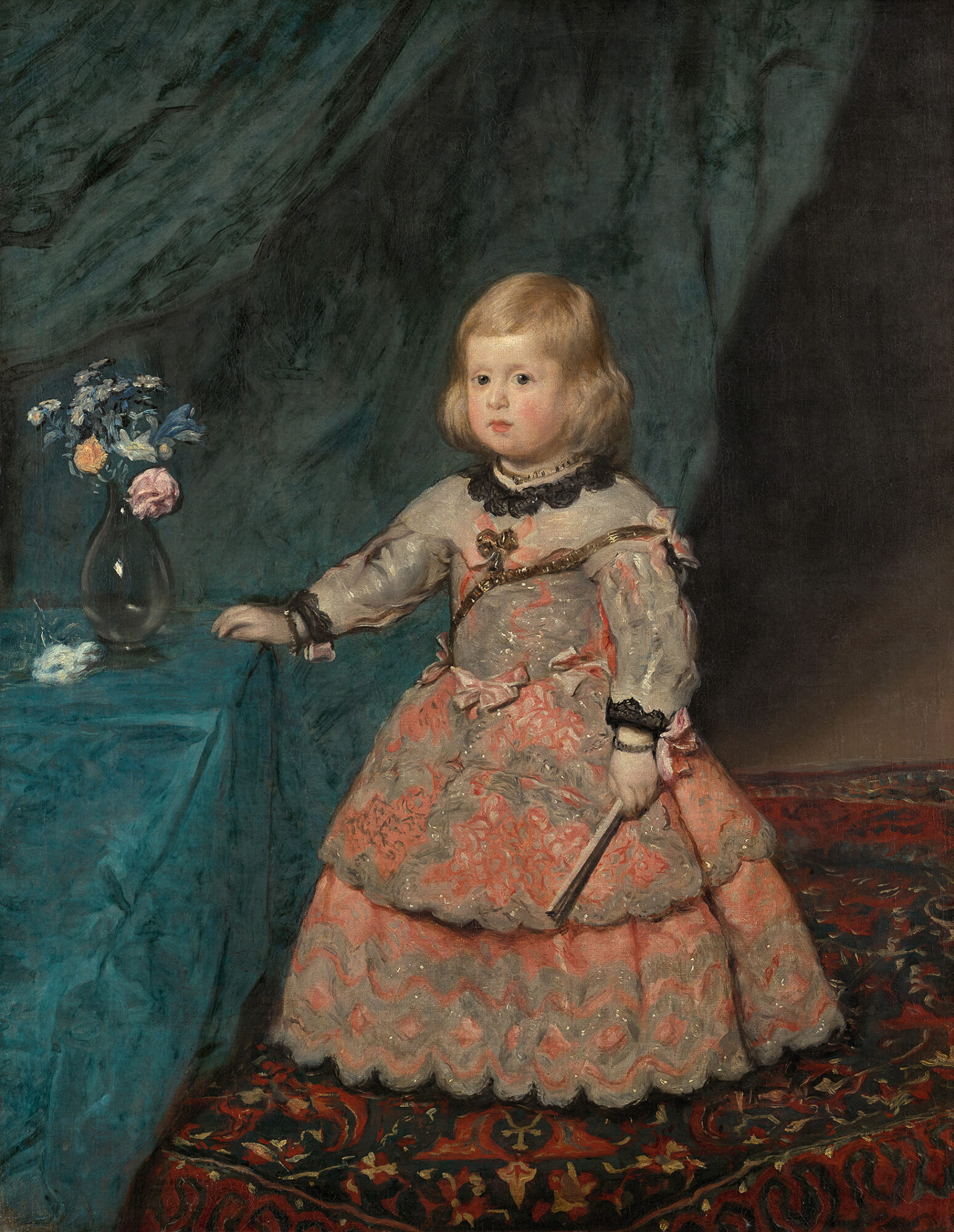
Matter of opinion #29: Mengs and Velázquez
17/01/2025 — 5/10/2025
KUNSTHISTORISCHES MUSEUM WIEN
Maria-Theresien-Platz, 1010 Wien
The special presentation Ansichtssache, which regularly showcases different works temporarily within the permanent exhibition of the Paintings Gallery at the Kunsthistorisches Museum, highlights in its 29th edition a masterful portrait of the nine-month-old Princess Marie-Therese of Bourbon-Sicily. This presentation invites visitors to explore the work of two celebrated court artists, Anton Raphael Mengs and Diego Velázquez, in greater depth.
Long kept in storage, the portrait of the infant princess has regained its extraordinary painterly quality thanks to a recent restoration. This restoration, along with the accompanying art historical analysis, sheds new light on Mengs: more than previously recognized, he drew inspiration from Diego Velázquez, his predecessor as court painter in Madrid. Additionally, the portrait’s strikingly vivid naturalism reflects a changing perception of childhood in the late 18th century.
Infanta Margarita of Spain in a Pink Dress Diego Velázquez (1599–1660) 1653/54 Vienna, Kunsthistorisches Museum © KHM-Museumsverband
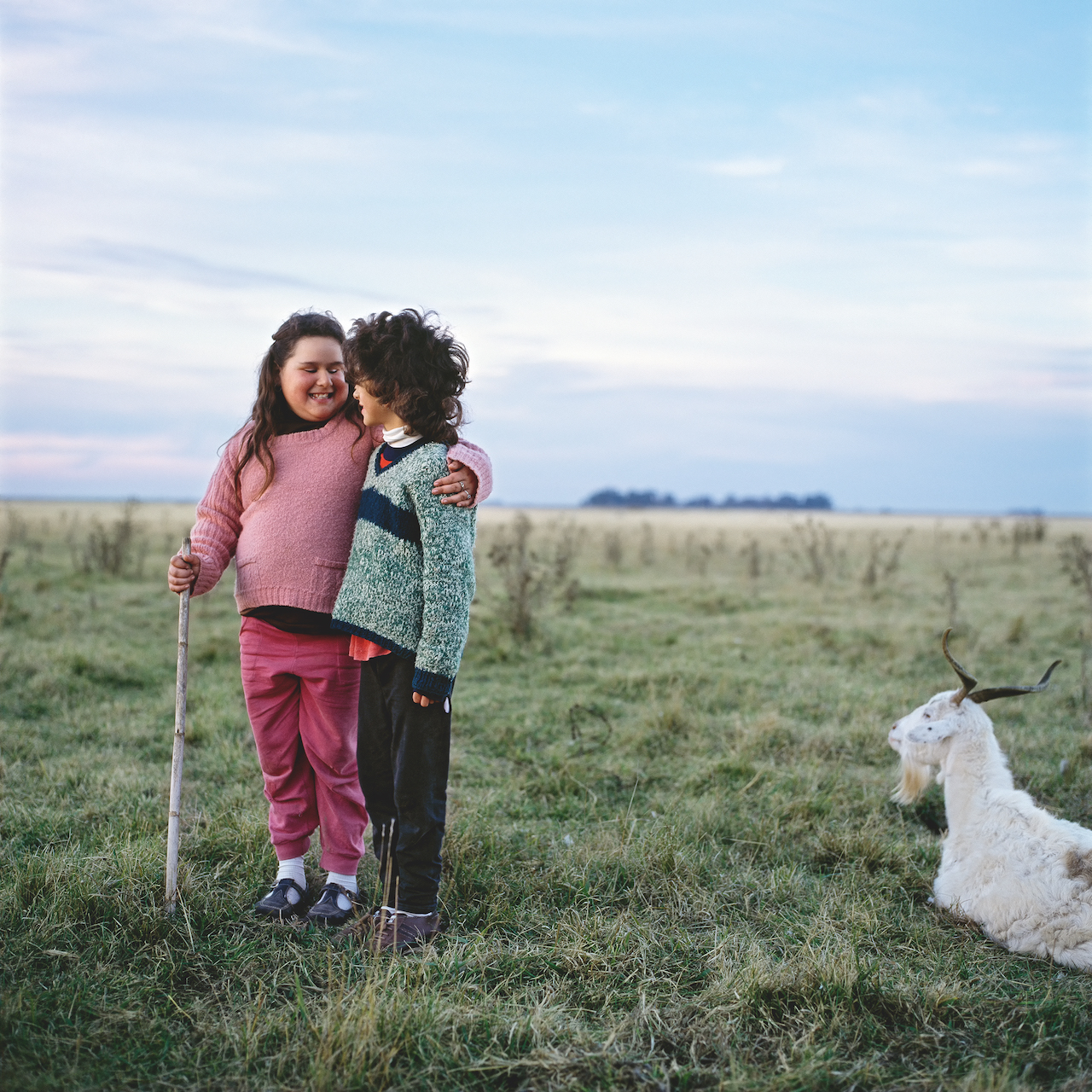
In the spirit of friendship
27/09/2024 — 4/08/2025
Dom Museum Wien
Stephansplatz 6, 1010 Wien
The subject of friendship is thoroughly existential and timeless, cutting to the bone of human existence. A theme that spans all historical periods and across all regions of the world. At the same time, the subject seems particularly relevant right now: In light of the threatening state of the world, the countless crises, conflicts, and increasing social divisions, Dom Museum Wien’s decision to dedicate this exhibition to a conciliatory interpersonal subject is all the more important.
“In times when polarization in politics, society, and social media as well as rampant egotism on Dom Museum Wien that placed connective elements, the give-and-take of me-and-you, and the dialogical principle front and center”, says museum director Johanna Schwanberg, who curated the exhibition together with co-curator Klaus Speidel. The exhibition title deliberately shies away from purely positive, often idealized connotations of the word “friendship” as the harmony of two souls, to signalize that this is no romanticized “sunshine-and-rainbows” presentation. “In the Spirit of Friendship” also addresses problematic aspects related to this type of relationship.
Friendship is a basic human need: relationships with others, spiritual closeness, and chosen family shape our lives. The exhibition deals with the universal meaning of friendship as part of human social interaction – on a personal or political level. Facets of friendship are explored via graphics, painting, sculpture, photography, video, and installation art. In addition to national and international loans and new commissioned works, the exhibition also offers insights into the collections of Dom Museum Wien.
Like in all preceding special exhibitions at Dom Museum Wien since its reopening in 2017, “In the Spirit of Friendship” doesn’t tell a chronological story but rather uses contrasts and juxtapositions of works from various periods of art history. The sculptures, paintings, drawings, photographs, and video installations span a historical arc from the Middle Ages to the present day. The selection comprises works from the historic holdings of the museum and the Otto Mauer Contemporary Collection as well as high-caliber loans from national and international collections, museums, abbeys, and galleries. The exhibition also incorporates several site-specific commissions and new acquisitions from numerous contemporary artists.
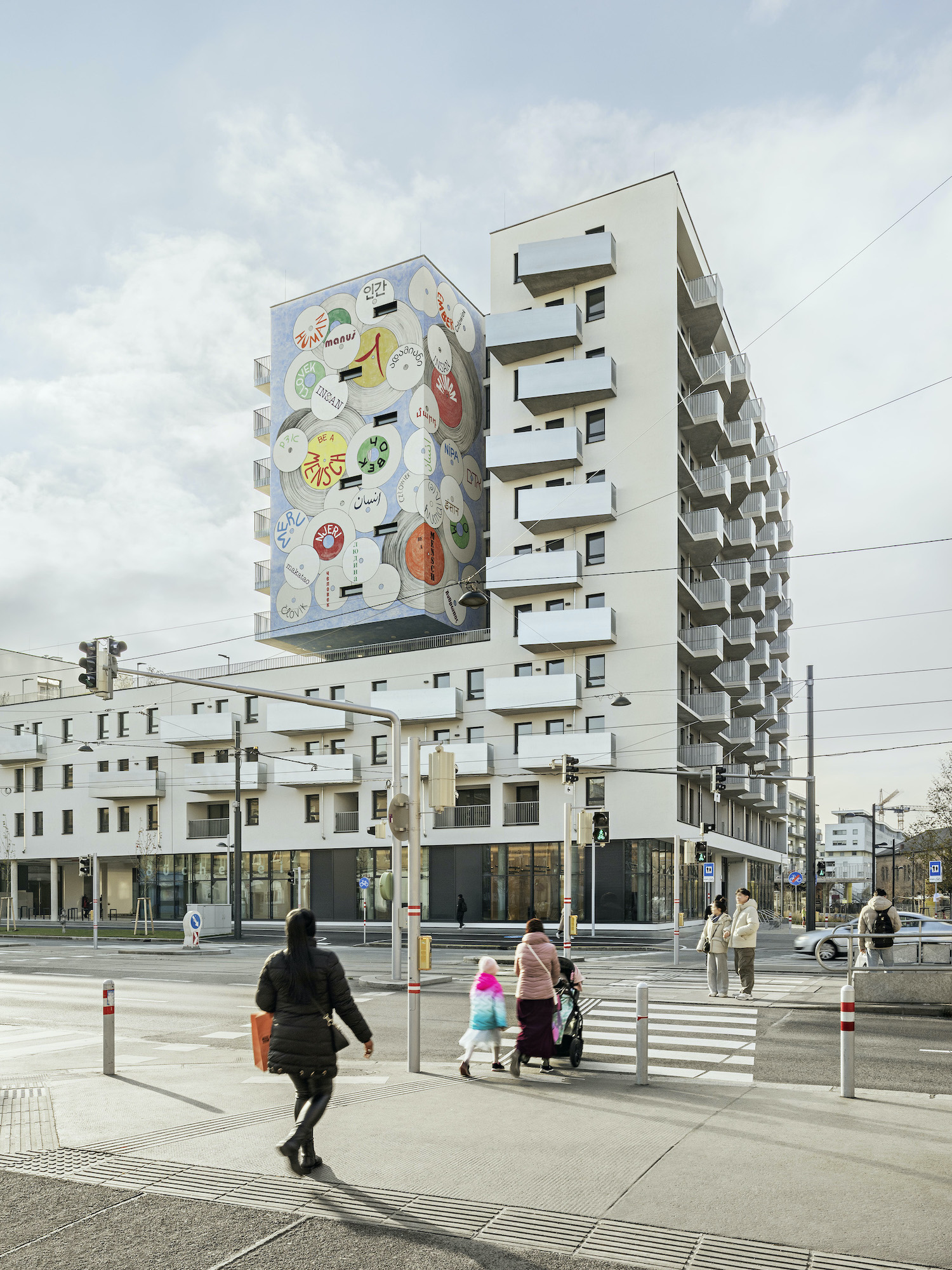
Be a mensch: Johanna Kandl
26/09/2024 — 26/09/2026
KÖR Kunst im öffentlichen Raum Wien
Nestroyplatz 1/1/14, 1020 Wien
With a wall design for the new municipal building in Laxenburger Strasse (architecture: Pichler & Traupmann Architekten), the City of Vienna is continuing its long tradition of art in (municipal) buildings. The artist Johanna Kandl won the competition organized by KÖR Wien together with WIGEBA, Wiener Gemeindewohnungs Baugesellschaft m.b.H. With the design “Be a mensch”, the artist commemorates the work and legacy of Willi Resetarits (1948-2022). The quote stands for the musician and human rights activist, who knew better than almost anyone how to bring together the most diverse social and cultural groups. Borrowed from Yiddish into American English, the word “mensch” refers to a person of honesty and integrity.
Johanna Kandl takes up this appeal to humanity and the play with language as an expression of diversity and inclusion in her mural for the new municipal building at Laxenburger Straße 4/4A, which will be named after Willi Resetarits in the future.
Be a Mensch, Johanna Kandl, Photocredits © Hertha Hurnaus
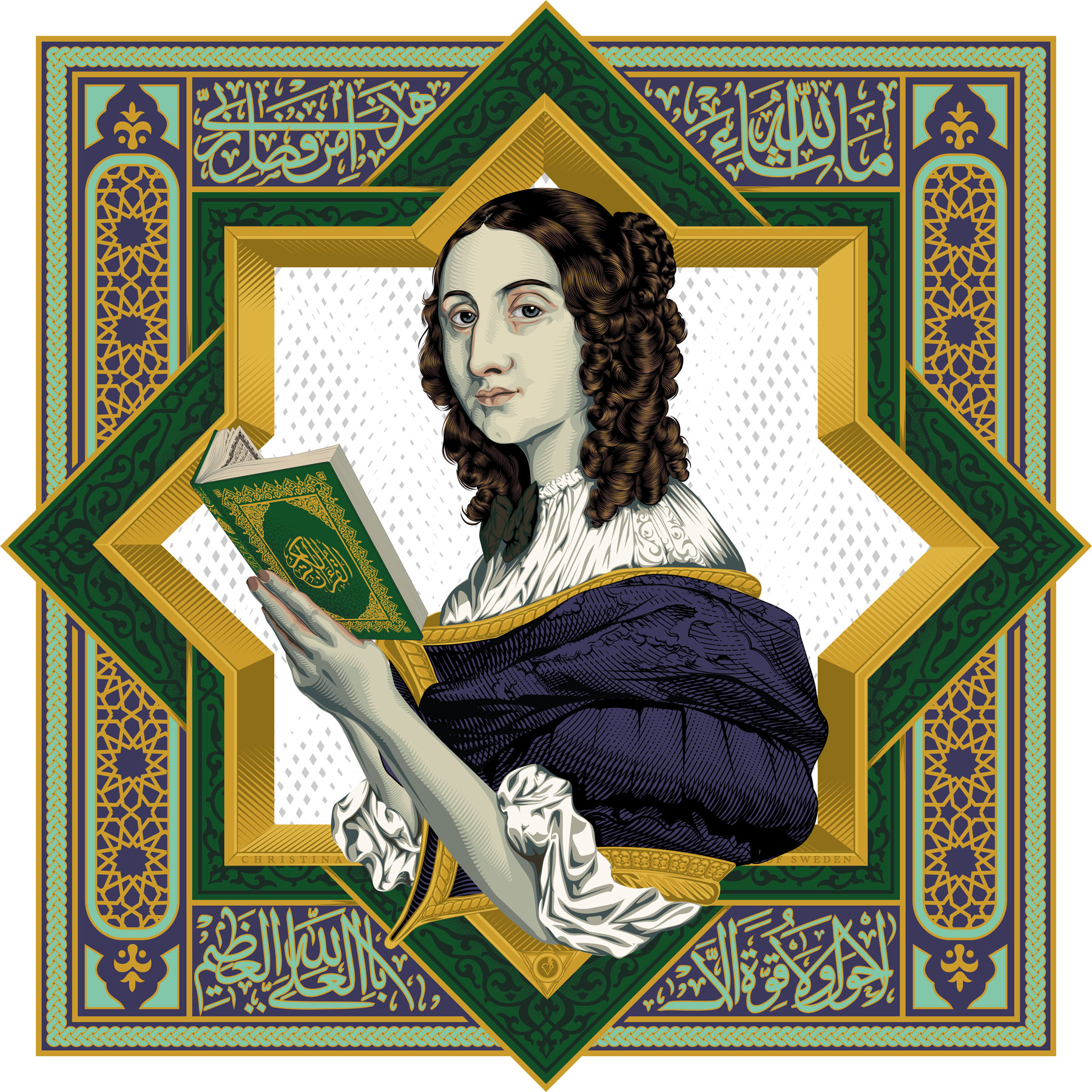
The European Qur'an
18/09/2024 — 24/08/2025
Weltmuseum Wien
Heldenplatz, 1010 Wien
What role does the Holy Scripture of Islam, the Qurʾān, play in the history of European thought? How has it been read and understood in Europe since the first translations in the Middle Ages? A special exhibition opening in autumn 2024 at the Weltmuseum Wien is dedicated to these questions. It will illustrate the diverse ways in which the Qurʾān has been experienced, read, and interpreted in Europe. With original historical artefacts, contemporary works of art, and media installations, the exhibition shows the significance of the Qurʾān in the lives of Europeans. It was developed in collaboration with the European Research Council (ERC) Synergy Grant Project “The European Qurʾān. Islamic Scripture in European Culture and Religion 1150–1850 (EuQu)”.
Marwan Shahin, One Thousand Years 2024 © Marwan Shahin

Nora Turato: Aaaaaaaaaaaaaaaaaaaaaaaaaaaaaaaaaaaaaaaaaaaaaaaaaaaaaaaaaaaaaaaaaaaaaaa!!!!!!
5/09/2024 — 14/09/2025
Kunsthalle Wien Museumsquartier
Museumsplatz 1, 1070 Wien
Aaaaaaaaaaaaaaaaaaaaaaaaaaaaaaaaaaaaaaaaaaaaaaaaaaaaaaaaaaaaaaaaaaaaaaaaaaaa!!!!!!
Kunsthalle Wien announces a new annual public art commission for its Museumsquartier building. Nora Turato (b. 1991, Zagreb) will inaugurate the Kunsthalle’s ‘Vitrine’ series with a new 62-metre mural which will remain on view for a year. The work will extend around the south-west wall of the building and be visible to passers-by as they traverse the outer arc of the Museumsquartier.
Turato’s work employs language as its primary material, playfully addressing the power structures at work in its spoken and written forms. Drawing upon a myriad of textual and typographic sources, she appropriates words and phrases, quoting advertising, mass media, SMS and email conversations in paintings on enamel panels and directly on walls. Fragments of text are also collaged to compose longer text-based works published as books or employed as scripts for videos and spoken word performances. T
urato’s new work, will use the length of the Kunsthalle’s Museumsquartier building to illustrate a scream. The artist’s typeface and its controlled application in this meticulously constructed wall painting is set in direct contrast to the text which mimics one of the most primal and uninhibited forms of expression. Unlike the so-called ‘primal scream’, ‘Aaaaaaaaa aaaaaaaaaaaaaaaaaaaaaaaaaaaaaaaaaaaaaaaaaaaaaaaaaaaaaaaaaaaaaaaaaaa!!!!!!’ refers not to a single, personal trauma but rather to the ‘ongoing incessant news cycle and state of the world with which we are all confronted and where this scream is the only reasonable form of not just release, but expression.’
Biography
Nora Turato (b. 1991, Zagreb) has held solo exhibitions at the Museum of Modern Art, New York (2022); Secession, Vienna (2021); Centre Pompidou, Paris; The International Centre of Graphic Arts, Ljubljana (both 2020); Serralves Museum of Contemporary Art, Porto (2019) and Kunstmuseum Liechtenstein (2019). Her work has also been presented within significant international surveys including the Performa Biennial 2023; New York; PostCapital: Art and the Economics of the Digital Age at MUDAM Luxembourg and Kunsthal Charlottenborg, Copenhagen (2021 and 2022 respectively); INFORMATION (Today), Kunsthalle Basel and Astrup Fearnley Museet, Oslo (2021 and 2022 respectively); Cleveland Triennial for Contemporary Art (2022) and the Belgrade Biennale (2021). Turato lives and works in Amsterdam.
Nora Turato, Aaaaaaaaaaaaaaaaaaaaaaaaaaaaaaaaaaaaaaaaaaaaaaaaaaaaaaaaaaaaaaaaa!!!!!!, Kunsthalle Wien 2024, Courtesy the artist, photo: Iris Ranzinger
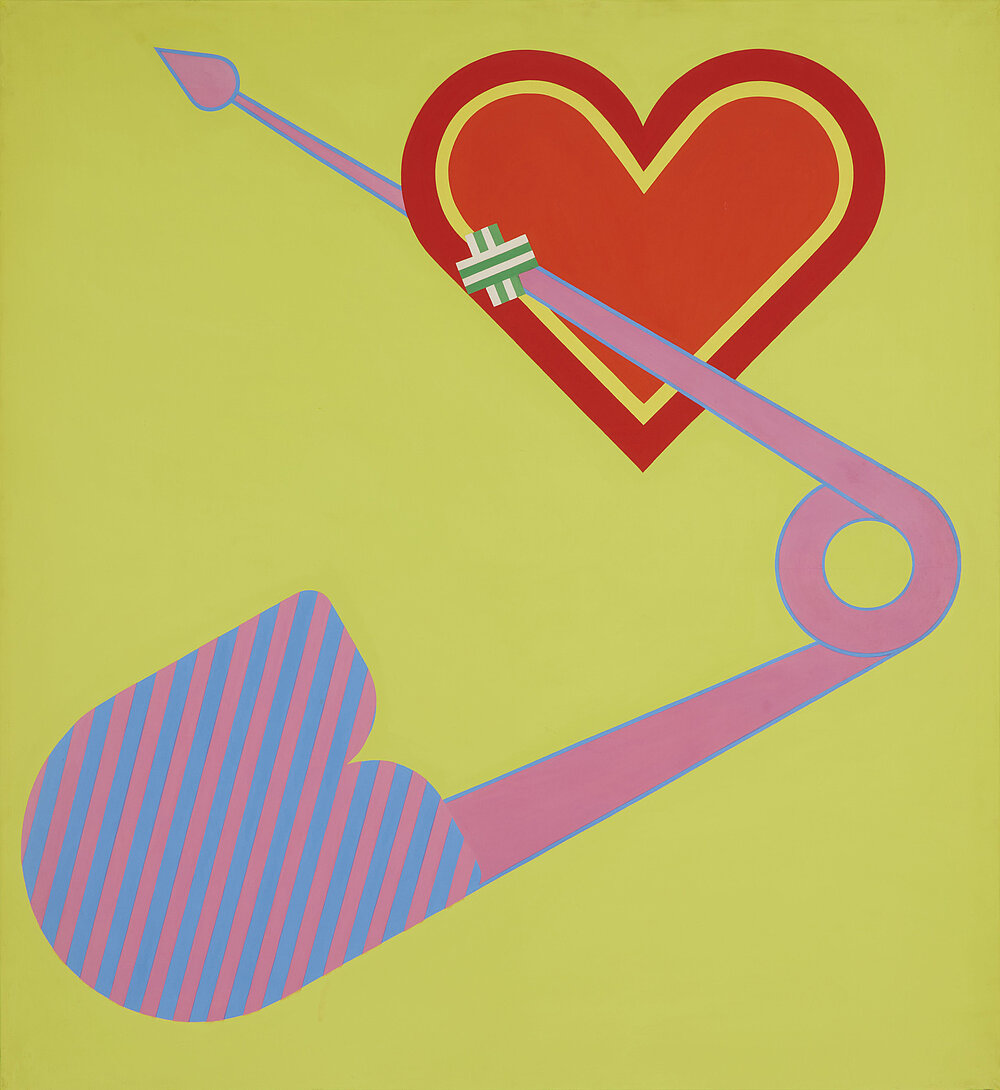
Mapping the 60s - Art Histories from the mumok Collections
5/07/2024 — 11/02/2026
mumok – Museum moderner Kunst Stiftung Ludwig Wien
Museumsplatz 1,1070 Wien
The exhibition Mapping the 60s is based on the thought that substantial sociopolitical movements of the twenty-first century have their roots in the 1960s. Black Lives Matter and #MeToo, for example, have built on the anti-racist and feminist upheavals of yesteryear—as have current debates on war, mass media and mechanization, consumerism, and capitalism.
The developments of the 1960s in general and the events around 1968 in particular are not only paradigmatic in social and political terms, but also essential with regard to cultural policies. In 1962, the Museum des 20. Jahrhunderts was founded in Vienna, a precursor of mumok, whose collection focuses on Pop Art, Nouveau Réalisme, Fluxus, Viennese Actionism, performance art, Conceptual Art, and Minimal Art—artistic movements of the 1960s. Even when we ask ourselves how to address art history today and make it productive, we encounter discussions that go back to that decade.
Curated by Manuela Ammer, Marianne Dobner, Heike Eipeldauer, Naoko Kaltschmidt, Matthias Michalka, Franz Thalmair
Artists: Arman, Siah Armajani, Richard Artschwager, Evelyne Axell, Jo Baer, John Baldessari, Iain Baxter, Marlène Belilos / André Gazut, Joseph Beuys, Peter Blake, Mel Bochner, Alighiero Boetti, George Brecht, Peter Brüning, Jack Burnham, Michael Buthe, James Lee Byars, Pier Paolo Calzolari, Christo, Chryssa, Jef Cornelis, Robert Cumming, François Dallegret, Hanne Darboven, Walter De Maria, Jan Dibbets, Öyvind Fahlström, Mathilde Flögl, Sam Francis, Karl Gerstner, Alviani Getulio, John Giorno, Domenico Gnoli, Roland Goeschl, Robert Grosvenor, Hans Haacke, Raymond Hains, Sine Hansen, David Hockney, Michael Heizer, Richard Hamilton, Duane Hanson, Jann Haworth, Dick Higgins, Davi Det Hompson, Robert Huot, Robert Indiana, Alain Jacquet, Olga Jančić, Tess Jaray, Alfred Jensen, Jasper Johns, Asger Jorn, Allan Kaprow, Ellsworth Kelly, Corita Kent, Edward Kienholz, Konrad Klapheck, Kiki Kogelnik, Joseph Kosuth, Gary Kuehn, John Lennon, Les Levine, Sol LeWitt, Roy Lichtenstein, Richard Long, Lee Lozano, Mario Merz, Robert Morris, Ronald Nameth, Bruce Nauman, Claes Oldenburg, Jules Olitski, Yoko Ono, Dennis Oppenheim, Panamarenko, Pino Pascali, Walter Pichler, Larry Poons, Mel Ramos, Germaine Richier, Bridget Riley, Jean-Paul Riopelle, James Rosenquist, Teresa Rudowicz, Carolee Schneemann, Karl Schwanzer, George Segal, Richard Serra, Miriam Shapiro, Robert Smithson, K.R.H. Sonderborg, Keith Sonnier, Sophie Taeuber-Arp, Paul Thek, Walasse Ting, Günther Uecker, Bram van Velde, Stan Vanderbeek, Frank Lincoln Viner, Franz Erhard Walther, Franz Erhard Walther / Arno Uth, Bernar Venet, Wolf Vostell, Andy Warhol, William Wegman, Lawrence Weiner, Tom Wesselmann, William T. Wiley
Sine Hansen On Top, 1967 130 cm x 120 cm x 2.8 cm Egg tempera on canvas mumok - Museum moderner Kunst Stiftung Ludwig Wien, Foto: Nora Meyer
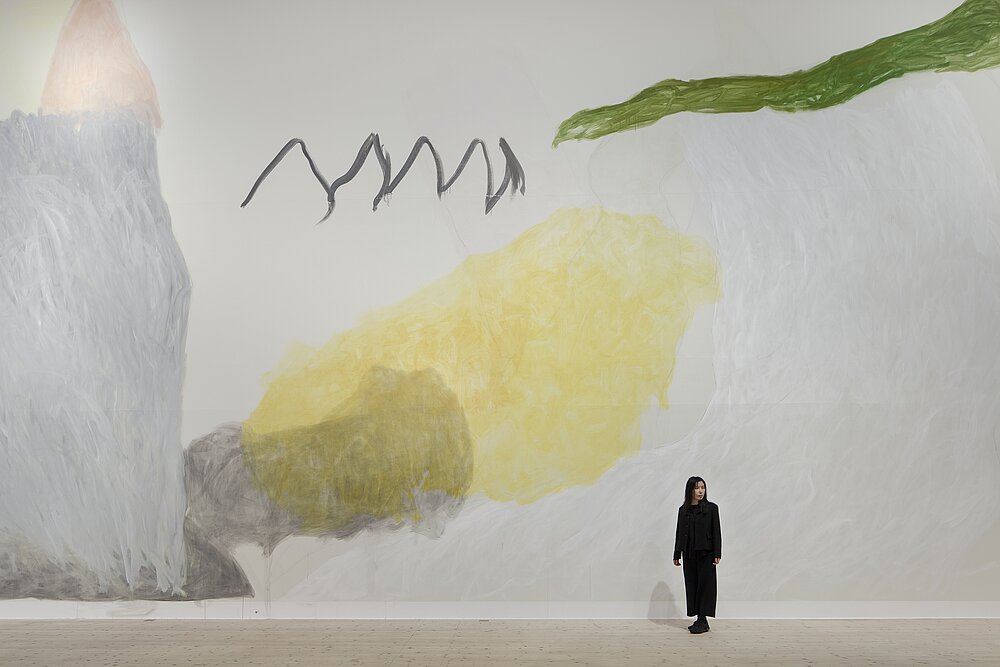
Jongsuk Yoon: Kumgangsan
7/06/2024 — 1/08/2025
mumok – Museum moderner Kunst Stiftung Ludwig Wien
Museumsplatz 1,1070 Wien
On the occasion of its reopening, mumok has invited the artist Jongsuk Yoon to conceive a new mural for the museum lobby. After photo-based installations by Cindy Sherman, Louise Lawler, and Jeff Wall, the most recent artist to create a mural was Siegfried Zaworka, who in his work dealt with the illusionist potentials of painting. Jongsuk Yoon now responds to the challenge of the monumental format with levitating, wholly anti-monumental and anti-heroic landscape pictures. Reduced means and the processuality of painting govern Yoon’s artistic practice, which she has developed in critical reflection of the paradigms of Western Modernism and East Asian traditions—particularly Expressionism, Abstract Expressionism, and Korean sansuhwa (Mountain and Water Paintings). Diaphanous layers of large-scale color patches, processual traces, and graphic ciphers condense to form panoramic “soul landscapes” (J. Yoon), in which “inner” and “outer” perspectives oscillate.
Kumgangsan is the painterly convergence on a mountain region that Yoon herself has never set foot on: Since 1945, it has been the arbitrary dividing line and visible border between North and South Korea and, as such, is a symbol of an unresolved geopolitical conflict and its still traumatizing aftermath.
Jongsuk Yoon vor dem Wandbild Sun and Moon, Foto: Kalle Sanner © Nordiska Akvarellmuseet Courtesy the artist and Galerie nächst St. Stephan Rosemarie

Hot Questions – Cold Storage
3/02/2022 — 30/03/2026
10:00—19:00
Architekturzentrum Wien
Museumsplatz 1 im MuseumsQuartier (Eingang Volkstheater), 1070 Wien
The Permanent Exhibition at the Architekturzentrum Wien
The permanent exhibition at the Architekturzentrum Wien provides insights into the most extensive and comprehensive collection on Austrian architecture of the 20th and 21st centuries. At the centre is the investigation of key exponents, including well-known and less well-known objects. Seven Hot Questions bring Cold Storage to life.
The Architekturzentrum Wien is the only museum in Austria devoted exclusively to architecture. As the Az W Collection has expanded over the last 17 years and consists of over 100 architects’ archives as well as extensive collections of individual projects, a large number of objects are being shown for the first time in the Permanent Exhibition: ‘Hot Questions — Cold Storage’. Selected models, drawings, furniture, fabrics, documents and films develop new threads in seven thematic episodes. Each episode is preceded by one of today’s burning issues, a Hot Question that brings Cold Storage to life.
The nation’s building activity with all of its cultural, social, economic and technical ramifications is made strikingly visible. The contents covered range from the special significance of Red Vienna to architectural pedagogical experiments in the wake of the 1968 movement or architectural revolts in Vorarlberg, to historical and current examples of environmental rethinking. The exhibition also engages with the ideological instrumentalisation of architecture and spatial planning and the active collaboration of architects in authoritarian systems, as well as their resistance. At the same time, the exhibition challenges deficits in the canon of Austrian architectural history, for instance from a perspective of gender equality. New players are featured, light is shed on previously little known sources and the key focus is on multiple perspectives instead of on a national historical narrative. This diversity is also reflected in the exhibition design. The sheer variety of the exponents and their display makes a visit to the exhibition a sensual and an atmospheric experience.
Concept: Angelika Fitz, Monika Platzer
Curator: Monika Platzer
Curatorial Assistance: Sonja Pisarik, Iris Ranzinger, Katrin Stingl
Production: Andreas Kurz
Finances und conversion: Karin Lux
Assistance: Barbara Kapsammer
Exhibition design: tracing spaces / Michael Hieslmair, Michael Zinganel ; seite zwei / Christoph Schörkhuber, Stefanie Wurnitsch
© Architekturzentrum Wien, Sammlung